This build has been archived by the author. They are no longer supporting nor updating this build and it may have become outdated. As such, voting and commenting have been disabled and it no longer appears in regular search results.
We recommend you take a look at this author's other builds.
 Thank You!
Thank You!
Your votes and comments encourage our guide authors to continue
creating helpful guides for the League of Legends community.
Recommended Items
Runes: Standard page


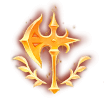
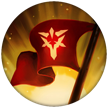
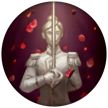
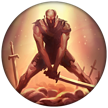

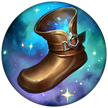

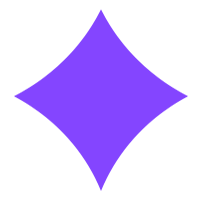


+9 Adaptive (5.4 AD or 9 AP)
+9 Adaptive (5.4 AD or 9 AP)
+6 Armor
Spells:


Flash

Teleport
Items
Threats & Synergies
 Threats
Threats
 Synergies
Synergies
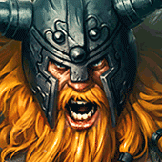 Show All
Show All
 Extreme Threats
Extreme Threats

 Ideal Synergies
Ideal Synergies

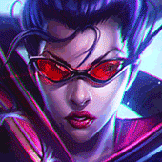
Vayne
In my opinion probably Olaf's hardest 1v1 matchup. It's close to impossible to out-trade her in lane because she's ranged but mobile with disengage-CC to boot. Get jungler help to take her down, and take down the turret quickly so that you don't get stuck against her 1v1 for too long. Vayne isn't very good in larger fights when she's not well protected and has to contend with hard CC from your team mates. Unlike with other ranged matchups you DO NOT have a clear advantage when you both have ult - if anything she actually might due to the recent buffs that reduce her Q cooldown while her ult is active.

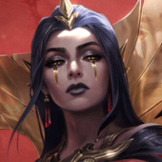
LeBlanc
Self-sufficient pseudo-dive-buddy that diversifies your damage profile and adds some much needed control with her chains. I'd say she's among the best mid laners for Olaf to have since she provides ranged burst + ranged CC but also doesn't usually need help with peel.

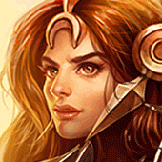

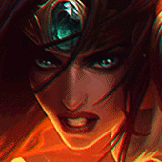
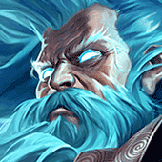
 Synergies
Synergies

LeBlanc
Self-sufficient pseudo-dive-buddy that diversifies your damage profile and adds some much needed control with her chains. I'd say she's among the best mid laners for Olaf to have since she provides ranged burst + ranged CC but also doesn't usually need help with peel.





Champion Build Guide
 Welcome to my Welcome to my I'm MHLoppy, a highly ranked player on the OCE server. I've previously been in the top 50 (S3) and top 200 (S4) of the ranked ladder, and have been at least Diamond every season since. Back when I was playing on NA I reached Diamond 1 there as well, despite playing with a 200 ping disadvantage. This is a complete overhaul of the guide which was previously published on LolKing - I've taken the best parts of that guide and rewritten the rest. The quotes you see here were taken verbatim from LolKing's comments section. 
|
|
I have a long history with Olaf, as he was actually the first champion I ever played after finishing the game's tutorials. I stuck with him, and in January 2015 the first version of my Olaf guide was published on LolKing. It was immediately awarded "Featured" status and over the years received just shy of four million views. Unfortunately LolKing shut down at the end of 2018, and all the guides there went down with it. Given the circumstances, I figured it was a good opportunity to revamp the whole thing before republishing it.
In this guide I'd like to share what I've learnt about Olaf in the hope that others can take that information and make use of it themselves - perhaps even building and improving upon it. Over the years I've spent a significant amount of time researching, running numbers, and testing things first hand in an attempt to separate "good" from "best available".

My goal is to not just have you know what my recommendations are, but to understand why they are - to gain some insight into why I end at the conclusions that I do, and the process that leads to them. In doing so you'll be better able to figure out the best choices in your own games, even for situations which the guide hasn't specifically covered.
If after reading this guide you have any questions or feedback, feel free to leave a comment or join my Discord server to drop by and have a chat. You can also keep up with what I'm doing using the social media links below.
Enjoy the guide!
 |
 |
 |
 |
 |
 |
 |
 |
 |
 |
 |
 |
 |
|
|
- why to pick him
- Strengths and Weaknesses
- synergies / when to pick (in its own section after this MAYBE?)
Some champions are pretty easy to define.
Ziggs is an artillery mage.
Here's a rundown of some of the changes made in recent patches which may have an impact on you if you're playing top lane Olaf. This includes changes made directly to Olaf, as well as those to his items / runes etc. Most changes to other champions are also summarised if they're one of the meta top laners, since those changes can affect how the matchup plays out. Significant changes to non-laners may also be summarised if I think it meaningfully affects how you have to play against them.
 Olaf-specific changes:
Olaf-specific changes: | |
|
N/A
|
|
| Other highlights: | |
|
 Show Patch 9.17
Show Patch 9.17 Show Patch 9.16
Show Patch 9.16 Show Patch 9.15
Show Patch 9.15 Show Patch 9.14
Show Patch 9.14|
|

|
Olaf's abilities: Levels 1-4: Q, W, Q, E -OR- Q, E, Q, W Priority after Level 4: R > Q > E > W |
|
| ||||||||||
|
| ||||||||||

| INNATE: Olaf gains 0% − 100% (based on missing health) bonus attack speed. |
| ||||||||
 Technical details Technical details Usage notes Usage notes | ||||||||||
|
View on LoL Wiki
| ||||||||||
| ||||||||||
|
| ||||||||||

|
ACTIVE: Olaf throws an axe to the target location, dealing physical damage to all enemies it passes through and slowing them for 1.5 − 2.5 (based on distance traveled) seconds. The axe remains at the target location for a duration equal to the cooldown. Olaf reduces the cooldown of Undertow by 4.5 seconds upon retrieving an axe. |
| ||||||||
 Technical details Technical details Usage notes Usage notes | ||||||||||
|
View on LoL Wiki
| ||||||||||
| ||||||||||
|
| ||||||||||

| ACTIVE: Active: For 6 seconds, Olaf gains bonus attack speed, bonus life steal, and 0% − 50% (based on missing health) enhanced healing from all sources. |
| ||||||||
 Technical details Technical details Usage notes Usage notes | ||||||||||
|
View on LoL Wiki
| ||||||||||
| ||||||
|
| ||||||

|
ACTIVE: Olaf deals true damage to the target enemy. Reckless Swing heals Olaf for its health cost if it kills its target and its cooldown is reduced by 1 second every time Olaf lands a basic attack. |
| ||||
 Technical details Technical details Usage notes Usage notes | ||||||
|
View on LoL Wiki
| ||||||
| ||||||||||||||
|
| ||||||||||||||

|
PASSIVE: Olaf gains bonus armor and bonus magic resistance while Ragnarok is inactive. ACTIVE: Olaf cleases himself of all crowd control. For the next 6 seconds, he becomes immune to crowd controls and gains bonus attack damage. For the first second of Ragnarok, he also gains bonus movement speed when moving towards nearby visible enemy champions. |
| ||||||||||||
 Technical details Technical details Usage notes Usage notes | ||||||||||||||
|
View on LoL Wiki
| ||||||||||||||

1) Choose one of these for your first summoner spell:
-
-
-
2) Choose one of these for your second summoner spell:
-
-
-
|
Only use |

|

Olaf has an unusually high level of flexibility in his summoner spells choices, and can viably run almost any summoner spell in the right circumstances.
|
⯅ Hover ⯅
|
 |
|
|
⯅ Hover ⯅
|
 |
|
|
⯅ Hover ⯅
|
 |
|
|
⯅ Hover ⯅
|
 |
|
|
⯅ Hover ⯅
|
 |
|
|
⯅ Hover ⯅
|
 |
|
|
⯅ Hover ⯅
|
 |
|
|
⯅ Hover ⯅
|
 |
|
|
⯅ Hover ⯅
|
 |
|
|
Base cooldown (seconds):
|
360
|
300
|
240
|
210
|
180
|
90
|
|
342
|
285
|
228
|
199.5
|
171
|
85.5
| |
|
324
|
270
|
216
|
189
|
162
|
81
| |
|
306
|
255
|
204
|
178.5
|
153
|
76.5
|


tldr text here
|
|
| ||||||
| text | |||||||
|
| lots of text about conqueror / grasp here!lots of text about conqueror / grasp here!lots of text about conqueror / grasp here!lots of text about conqueror / grasp here!lots of text about conqueror / grasp here!lots of text about conqueror / grasp here!lots of text about conqueror / grasp here!lots of text about conqueror / grasp here! |
180.png
See the Examining Olaf section further down for a breakdown on where I think Olaf fits into the damage vs durability spectrum, which in turn influences my item choices.
180.png
Olaf's viable build options are quite diverse; he can function acceptably as a beefy front-line with respectable base damage, but can also go for pseudo-assassinations with a very damage heavy build. Although I've experienced both armor-pen heavy builds and tanky-CDR builds over the last few years, I think the current best option for solo lane Olaf is to balance both damage and durability. You want enough damage to be a very real threat, but with enough durability to not be easily neutralised in a fight. As the game progresses you'll usually want to increasingly build for durability due to the scaling of full carries out-pacing your own.
Ideally, item builds will be different in every game (or at the very least, purchase orders will change) because team compositions etc. will vary. However, I do find myself gravitating towards a few specific items in most games, as they work very well in either the current meta and/or with Olaf specifically.
Keep in mind that my recommendations are coming from just my own experience, research, and testing. I can't claim to cover every single build or build variation, but I like to think that what I use is pretty close to optimal in most games.
179.png
Starting items:
Yellow trinket is the default starting trinket and deviating from starting with it as a top laner is extremely rare. During the early game, the persistent vision of the ward is typically far more valuable than the the possible vision denial of the red trinket.
Generalist / Flexible start: 2033.png3340_32.png
Corrupting potion is unique among the starting items, because it provides a moderate amount of both HP and mana sustain, but also increases your trading power due to its passive burn effect. On top of that, it has a positive effect on your gold income long-term, because it replaces your need to purchase health potions during the game.
Over the course of your first few recalls, you'll make up most of the gold spent on the Corrupting Potion (CP) by saving money on buying health potions, which has the potential to give you an item pacing advantage as the game progresses (assuming you would otherwise be buying health potions). However, you'll be missing out on the stats of something like a DBlade, which will mean you default to losing otherwise even trades unless you have a CP charge active to make use of its passive.
You'll usually want to try to use a charge as you begin a trade (to increase the damage dealt in the trade), not after the trade's over.
At the moment, CP seems like the best start for Olaf in most situations. It sports the most flexibility out of all the starting options and does not have an easily exploitable weaknesses.
Doran's Blade (offensive): 1055_32.png2003_32.png3340_32.png
DBlade gives you an offensive starting option that will help with last hitting and trading with the AD boost. The extra HP and slight sustain further aid your trading ability, and the total stats are the highest available out of any starting item.
While it generally does out-stat and out-trade other starting items, the reduced sustain (and lack of extra mana) can potentially be an issue, especially in matchups that rely on Q harass. That and its long-term gold inefficiency are the two biggest factors in why I generally favor CP over this.
I'd still be cautious of using this against a matchup with high harass/threat as well, as you can only make use of your life steal if you're somewhat healthy compared to your opponent already - especially as a melee champion - but you only have one potion to fall back on unless you're willing and able to burn teleport purely because you took a bad trade.
Doran's Shield (extremely passive): 1054_32.png2003_32.png3340_32.png
The updates in patch 7.9 appear to have improved both DShield's strength and identity - it looks to be a good option for laners that know they will lose (or find it too risky to push a lead) that simply want to focus on farming and safety.
Olaf really doesn't fall into that camp, as he's quite capable of bullying virtually every other laner when played smartly. At the very least, CP allows him to trade roughly evenly even in situations where you want to err on the side of caution and not commit to something overly dangerous.
As such, I think a Doran's Shield opening should very rarely be chosen in the vacuum of standard laning on Olaf. I would consider it if you are knowingly entering a 2v1 lane, or are against a high-harass difficult-to-all-in ranged champion (perhaps Vayne, Jayce, Lucian) when you have a weak jungler and the opposing team has a strong jungler (making it generally not worth attempting a kill early).
Long Sword (alternative offensive): 1036_32.png2003_32.png2003_32.png2003_32.png(or 2031.png)3340_32.png
Slightly surpasses the AD of DBlade, while trading out the HP and passive for a couple more potions and an actual build path. Starting with a Long Sword makes it much easier to rush one of the early offensive power spike items such as 3155_32.png Hexdrinker, 3044_32.png Phage, or 3133.png Caulfield's Warhammer, so if you highly value the passives from those items it's worth considering.
Alas, many of the items in the 1000~1500 gold range that were previously very strong to rush were nerfed in Season 6, so the value of early access to them is usually not that significant (with 3052.png Jaurim's Fist being a key exception). As such, I don't know if the early accelerated build path is worth the loss of level 1 stats on Olaf compared to DBlade. Casting comparisons to the longer-term (3000 gold onwards), other items such as CP or Cull will do as much or more to accelerate your build path, while being about as useful in lane against most matchups.
Cull (very niche opening): 1083.png2003.png3340.png
A much appreciated buff in 6.2 certainly helped a little, but the sales pitch as a starting item remains a little odd. 100 CS is a very late return on investment compared to other openings. Compared to Cull, the early flat HP from a Doran's item is likely to provide you with an equivalent amount of value over the course of laning in most matchups when you consider that that's enough HP to bully around the opposing laner during the early game, providing a lead which you can then build off of (increasing your average cs, lowering their average cs, and increasing your average kills and turret damage in lane).
Even compared to CP, which offers pseudo-gold gen due to not spending gold on potions, Cull's unreliability compared to it is a concern. I'm cautiously approving starting with Cull on Olaf in the rare situations when 1) you don't need more than rudimentary sustain and 2) will not get any meaningful benefit from extra lane pressure. I can't say I can think of examples of situations off the top of my head, but, supposing they exist, Cull might be a good starter.
Outside of said unknown situations, there's a chance Cull can still be useful in a game (not specifically a lane) where you need to accelerate an item break-point - such as if you're trying to rush for 2 major items and then force objectives or something. The amount of hate the item takes has left me very apprehensive about it though, at least as a starting item.
Hunter's Potion (double jungle early game): 2032.png3340.png (optional: 2055.png)
Offers 300 HP + 175 MP for 400g vs CP's 375 HP + 225 MP for 500g. Can be useful if you start the game with extended double jungling due to 2v1 lane etc and want something that has sustain for when you return to lane. The opportunity of buying a control ward can also be quite helpful if you're playing in a coordinated team and can make use of the extra vision. However, given that 2v1s and double jungling are not currently meta-strategies at any level of play, there's little reason to go for this opening at the moment.
179.png
Early Buys:
A shortlist of items to consider purchasing on your first or second recall. Early buys should be useful in the laning phase, either providing class-leading stats for their cost (e.g. DBlade) or providing average/good stats, but with a good build path into strong completed items (e.g. Phage into Black Cleaver).
1075_32.png Doran's Blade (very efficient dead-end all-rounder/offensive)
Gives you an offensive orientated, but still well rounded stat-boost that is very gold efficient for laning power. The downside is that it doesn't actually build into anything. If you don't think you'll get much advantage from the increased efficiency of this dead-end item, then you should skip over it in favor of component items so you'll get your completed items more quickly. Generally stick to a maximum of only 2 item slots used by any combination of Doran's/Cull and Refillable potions (i.e. 2 Doran's items or 1 Doran's item + Corrupting Potion). Maybe 3 total if you really want the extra power, particularly in an ultra snowbally matchup. Going for more than 2-3 will start interfering too much with the purchase of actual items.
DBlade can potentially smooth your item power curve slightly if bought at the right time, but incorrect purchase timing will simply delay your first item spike. With the current state of BC, I'd suggest that you at least consider buying one on your first recall in situations where foregoing the purchase doesn't give you enough gold to complete another item. (e.g. if you have Kindlegem and just enough gold to complete a Phage, but not enough for both Phage and DBlade, go for Phage. If you only have ~500-700 gold after a forced recall and no other component items, then DBlade can slot in nicely if you need some extra laning power)
1054_32.png Doran's Shield (efficient dead-end defensive if you're broke)
DShield, in my opinion, continues to have fairly narrowly prerequisites for its purchase on Olaf. I think it's worth considering if you're 1) losing lane against a harass-centric champion, but in a way that you absolutely cannot turn it around in the next 5 minutes with smart play and good itemisation AND 2) too gold starved to buy a more powerful defensive item. If you have the gold for something else, then the decent, but dead-end and poorly scaling nature of DShield makes me want to avoid it. For example if you're struggling against a matchup like Jayce and are forced out of lane during the first few minutes of laning phase with only ~500g in your pocket, you can think about grabbing a DShield to help you make it through the lane with a few less bruises and a bit more CS.
If you have item slots spare but want something a little more gold efficient longer-term, you can also consider going the route of a couple rejuv beads, but that long-term efficiency could also potentially cave in on itself if you miss additional CS by trying to be too frugal, since DShield will nearly always offer more regeneration during laning.
The regen and passive do not scale as well as DBlade, so feel free to sell it in the mid game if you can use the gold or slot to upgrade to a larger item.
See also: 1006.png Rejuvenation Bead
1083.png Cull (sort of build accelerator)
While I'm not currently sold on Cull being a good generic starting item for Olaf, I do think it makes an interesting early back purchase.
Let's assume a few things: 1) you intend to rush/build BC as your first major item, 2) you intend to buy a Long Sword on one of your early recalls, and 3) you have some breathing room in your lane; i.e. you're not being forced to prioritise early stats over all else due to high lane pressure.
In this scenario, which I believe isn't all that uncommon (although it depends on the meta at the time), Cull has the potential to offer you some decent stats for the lane (flat life on-hit is pretty good as far as light sustain goes), while also giving you a small gold increase before your second item purchase. So if you're in a "quiet" lane where you don't have to worry about being harassed or out-scaled, definitely consider a Cull.
The typical worst case scenario is that you delay your BC a little but hit your second item faster (which I still consider a neutral scenario). As long as you can maintain reasonable cs, you should be able to cash in on your Cull stacks and have 7 AD and 3 life on hit on a "spare" item, which will be providing you with "free" stats for a while until you run out of item slots. At that point you can just sell it for a small profit.
The main competition for Cull -- other than fully completed items and their components -- is DBlade. Cull's ability to make a profit out of thin air if given enough time makes it the better option of the two for lanes where you have plenty of breathing room and are in no rush to get of laning phase (the enemy laner / enemy team does not meaningfully outscale you). Grabbing Cull against a lane that can kill you (e.g. Riven) is just unnecessarily risky, while doing so against a lane or team comp that significantly out-scales you will make it more difficult to accelerate the game with aggressive plays, which is also unnecessarily risky in its own way.
If you do grab a Cull, generally stick to a maximum of only 2 item slots used by any combination of Doran's/Cull and Refillable potions (i.e. 2 Doran's items or 1 Doran's item + Corrupting Potion). Maybe 3 total if you really want the extra power, particularly in an ultra snowbally matchup. Going for more than 2-3 will start interfering too much with the purchase of actual items.
3044_32.png Phage (offensive all-rounder)
Offering a small amount of 3 different useful stats at a palatable price, as well as solid build and upgrade paths, Phage is an item choice that is still decent even in a worst case scenario. HP and AD are generically useful, while the mobility can be used to aid in short trades or even all-ins - position yourself to be able to run forward to the enemy immediately after killing a minion for extra effectiveness.
It is however worth noting that although the generic stats of HP and AD are great, the item is not actually cost-efficient without making use of the mobility as well.
The cost of being a jack of all trades is often being a master of none. If there's a very specific niche which you want your item purchase to address, you can usually find a better fit than Phage within the same price category. Some examples:
If you want kill pressure, Caulfield's usually tops the list of candidates. If you want kill pressure with some durability, Kindlegem and either DBlade or Long Sword is likely to be of more value. Early CDR generally has more kill threat than early mobility for Olaf.
For all-in power against a magic damage laner, Hexdrinker offers significantly more durability and even has slightly more AD. Of course, you do lose the mobility aspect for those benefits.
If wanting durability, then going for mostly-durability or even straight-durability items such as Ruby Crystal, Cloth Armor, or Ninja Tabi will almost certainly give you more mileage in that regard.
1053_32.png Vamp Scepter (luxury sustain/offensive)
It'll give you some extra sustain for the laning phase, but since more than half the gold spent is put into AD (not life steal), you should only buy it when said AD will also be valuable to you. With the increased cost of sustain from potions, other forms of sustain such as life steal become more viable for laning. However, since Vamp's sustain is tied to an investment in offensive stats, it's a bit of a luxury purchase - if you're behind you might not be able to afford it even if you have 950g to spend. On the flip-side, if you're ahead then you would almost certainly be better served by simply buying more damage and killing your opponent.
Unless you want one of the items it builds into or you know for sure you'll greatly benefit from the life steal in your situation, you should probably spend your gold somewhere else. 950g is a fairly significant delay to your first core item, and there are cheaper ways to get sustain if you are in dire need of it.
3067_32.png Kindlegem (semi-situational all-rounder)
Kindlegem provides a couple of really nice stats (HP+CDR) on a single item priced below 1k. Gold efficiency is decent, but not outstanding. The HP is more of a defensive stat and the CDR is more of an offensive stat, but both stats have some secondary usefulness in the other role.
Stacking an early Kindlegem with an early Glacial or Caulfield's is an option for E spam in specific matchups (if you're maxing E) - just be wary of your item slots.
While it's unlikely to single-handedly turn a matchup heavily in your favor, its versatility and build path into BC makes it a rarely-bad purchase - there are some similarities with Phage in this regard. It can also enable a lot of kill-threat if bought alongside AD items early in the game, as the combination of CDR and damage makes for a potentially lethal Q-spamming chase-down in many matchups.
At the ~1200 gold mark, Kindlegem + 1 Long Sword / Cull / DBlade generally offers more all-in power than any comparable items due to Olaf's strong CDR scaling. If you can't quite afford both Kindlegem and also an AD item, it'll be a tossup between buying just a Kindlegem, or getting AD + a Ruby Crystal. For matchups where poke is king, the AD is probably more important, but matchups with rapid 100-0'ing fights will favor the stronger all-in of Kindlegem's CDR (even if you can't back it up with AD).
3155_32.png Hexdrinker (efficient offensive vs magic dmg)
If you're up against heavily magic damage in lane and are looking to brawl it out with repeated deep trades and/or all-in fights with the goal of killing the enemy laner, Hexdrinker is a good fit, offering more stats in that situation than any other item in its price bracket.
Two caveats: it doesn't have any CDR (limiting your ability to cast Qs in quick succession during all-ins), and it also delays your BC to build it. While the first can be offset by buying it alongside something like Caulfield's Warhammer or Kindlegem for CDR, the second is just something you'll have to swallow when you opt-in to buying Hexdrinker. As such, you can build it when it'll benefit you - but if you're not sure if it'll be worth it in your situation, then just stick to finishing your BC. If you do build it, I recommend buying a CDR-item after it to maximise its offensive effectiveness.
Due to the item's high overall efficiency vs magic damage, you can also use it as a power spike in a matchup - and if you can get a kill that you otherwise couldn't because you bought a Hexdrinker, that alone is probably enough to make it worth buying.
3211_32.png Spectre's Cowl (efficient defensive vs magic dmg)
Hexdrinker's defensive counterpart. If magic damage harass is crippling your ability to lane, then the combination of stats provided here will definitely help you out. A reasonable amount of HP and MR to reduce the significance of a single spell's damage relative to your total durability, with some regen to offset a portion of the damage which you do end up taking.
However: if you have the option to simply buy a Black Cleaver (or Hexdrinker) and then kill the guy harassing you, I advocate that route instead of getting side-tracked on a Spectre's Cowl, since the Cowl will often be less useful come mid-game and will be delaying your other items regardless. Getting side-tracked on an a Spectre's not only delays your core items, but drastically reduces your threat level because it doesn't provide any offensive capabilities. Generally look elsewhere unless you're in a "slow" lane or feel you have no choice but to build defensively at the time.
3047_32.png Ninja Tabi (all-rounder vs physical dmg)
Tabi + HP can often be a good option for early itemisation against physical damage. The extra mobility helps you duck in and out of trades more quickly, while the passive and armor will nudge trades in your favor, especially when minions are involved. The extra mobility is also useful in an all-in scenario: either to chase down a fleeing opponent or to run away from an angry Tryndamere. In terms of raw efficiency, be aware that you're using some of your gold investment on mobility, not defense. The passive mostly makes up for it, but during the early game it usually won't quite break even - the item becomes more efficient the more armor you have.
If you're up against somebody that relies heavily on autoattacks for their damage output, then the value of Tabi increases. Not only will the passive 12% damage reduction kick in, autoattacks are usually more affected by mobility increases than damage-centric abilities, since they'll often need multiple autoattacks to deal the damage that a single ability cast could (but increased movement speed means you can often get out of range of subsequent hits).
You'll often end up with these boots later on in the game regardless of whether you buy them during laning or after it, so it mostly comes down to whether you want them sooner or whether you want them later.
This graph is going to live here for now - I'm still partway through re-organising everything in the Items section, so it may not live here for long. The green line shows how much armor that Ninja Tabi's passive is equivalent to. For example, if you have 100 armor including the 30 from Ninja Tabi, then you take damage from autoattacks as though you had around 128 or so armor. Pretty neat!
zP4qYlK.png
This graph reflects the nerf to Tabi in 7.10.
See also: 3047.png Ninja Tabi (under Armor category)
1006.png Rejuvenation Bead (cheap, cost-efficient sustain)
Popularised during the first half or so of Season 7 primarily as a starting item on tank champions like Shen, Rejuvenation Bead can absolutely be a drop-in sustain option for a plethora of other champions as well - Olaf included. Assuming you start with CP, Rejuv Bead is probably the most cost efficient way of increasing Olaf's sustain further, although there's increased competition from the updated Doran's Shield as of Patch 7.9.
With a resale value of 105, it costs just 45g to noticeably increase your health regeneration over a period of time - easily more cost efficient than a potion so long as you have the luxury of time. If you were to buy two Beads at level 5, then hold onto them for 10 minutes of in-lane time before selling them (at which point you'd be around level 10), you would have regenerated up to ~1600HP purely from the Beads during that time, which is incredibly good value against light to moderate harass.
There are certainly some caveats though: delay of other items, use of item slots, and vulnerability to all-ins. You definitely do not want to clog up your inventory with too many of them, especially if you're not planning to make use of them in any upgraded items (e.g. Tiamat). For Beads which you do not intend to upgrade, I recommend you treat them similarly to Doran's items in terms of how many you buy.
They're also tough to make good use of if you're up against a champion that can abuse the fact that regeneration is not a good stat to sink gold into for deep trades or an an all-in fight (think things like Riven). While you may be able to regen somewhat afterwards, you'll likely be missing out on CS and pressure in the meantime.
Delaying your other items can be a little iffy if you purchase the Beads at the wrong time - you'll want to buy them early-ish to maximise their effectiveness, but ideally skip over them if you can simply buy combat stats and then fight the enemy laner instead. Much like with the situation of Spectre's Cowl, Olaf usually gets more mileage out of killing the other guy than sustaining through their harass. But since they're so cheap, it can still make sense to grab one when you can't afford anything else.
See also: 1054.png Doran's Shield
Quick note on 1004.png Faerie Charm:
Although Rejuv Bead can be a frequently useful early purchase, I don't think Faerie Charm is nearly as cost-effective, and can think of extremely few circumstances where it makes sense to sink gold into. If you very-seriously find yourself in dire need of more mana (and not anything else) and you already have a CP, honestly think about just buying a mana crystal - whether or not you end up upgrading it. Doing so and selling later it only costs you 105 gold long-term, but is likely to serve you far better than a Faerie Charm or two.
3133.png Caulfield's Warhammer
Although it no longer builds into Black Cleaver, it does fulfill a specialised niche very neatly: kill the other guy now.
AD and CDR is the single best combination if you want to bully and rapidly murder your lane opponent to push a lead or create one against a champion that doesn't have high burst damage, and Caulfield's is the most efficient way to get both of those stats during the early game.
However, because it doesn't build into either BC or TF, you may find yourself stuck on it if you buy it and then move onto your core item. 1100g is a very significant gold hit, and although the stats are good, it delays the power spike of the the completed item quite a lot. You do have a couple of generalist-enough upgrade paths with Death's Dance and Maw, as well as the Lethality-route with Duskblade and Ghostblade if you feel like one those are a good fit in your specific game. It's possible to go Caulfield's -> DD or Maw -> BC or TF in some matchups, in which case delaying your core item will be of reduced concern.
Generally speaking, if you're not sure if you can push your lead with this item equivalent to the timing-hit you take from sinking 1100g into it, it's safer to skip over it. But if you're feeling it, it can serve you very well indeed.
3076.png Bramble Vest
If you're up against a champion in lane that is overwhelmingly based on autoattacks, or is moderately-heavily based on autoattacks but also relies on healing or life steal, Bramble Vest can be an attractive pickup. In a back and forth autoattack trade, it'll be a net +6.5 (due to self-armor-scaling) extra damage each time you trade an auto, plus the benefit of 35 armor, plus an ongoing application of Grievous Wounds so that they can't drain-tank off you. Even pot-shots against you over the course of the laning phase will mean your opponent is going to be randomly down a small amount of HP simply because their life steal and base health regen has been reduced by a second or two dozens of times. That doesn't sound like much (and in many ways it isn't), but making your opponent lose 100 HP for no effort can have a real effect on the value of an early game item.
Whether it's worthwhile or not as an early purchase comes down to mostly two things: how much the item messes with the enemy laner, and how much you're willing to not build direct damage to get Bramble Vest. Even if the enemy laner is greatly affected by the item, it's not automatically something that should be bought ASAP. Sometimes you're still best off completing your first major item before you grab it - use your best judgement.
Examples of champions that you can consider buying it against: 23.png Tryndamere, 48.png Trundle, 39.png Irelia, 266.png Aatrox, 114.png Fiora, 83.png Yorick, 236.png Lucian.
179.png
Why 3071.png Black Cleaver as the standard core item? (3078.png TF?)
I'm pretty sure basically nobody calls BC "The Black Cleaver", even if that is technically its full name. Maybe there's a Rioter that does, but everyone in the office probably makes fun of them for it. Anyway.
There's a number of things Olaf loves to have immediately - Health (the most efficient defensive stat early regardless of damage type), CDR (to unlock the ability to axe spam and make better use of E), and some damage (improves poke and trading, enables him to kill targets he reaches and also last hit and clear waves easily).
Black Cleaver provides all of these things (and is one of very few items to do so), as well as having a few extra perks:
Low cost steps during the build process. Both Phage and Kindlegem have cheap upgrade costs and cheap components themselves, meaning you'll have a much easier time affording an item during your early laning. The upgrade cost is more expensive, but that matters less than the initial component purchases since it isn't relevant during early laning.
Mobility that doesn't come bundled with situational or low-combat-effectiveness stats. You're not buying armor (not useful vs magic damage) or mana (rarely useful in an all-in) or anything else that isn't generically useful for Olaf. Black Cleaver's stats will always be effective in your matchup.
Armor shred that is useful against both tanks and squishies (and it even benefits your team!).
More than 10% CDR without having to buy something situational. Very few items provide high CDR without being tied to conditional usefulness (for example, it's incredibly inefficient to buy FH against magic damage).
Due to the cretinous cyclical nature of Riot's balancing decisions (hey guys use this <item or champion> more! *buffs <item or champion>*), 3078.png Trinity Force has emerged as more than just a "yeahhh, but not really" option. While Olaf cares little about the changes to the item's attack speed and crit chance, the extra 10% CDR offered makes it significantly more appealing as a first item. It has a build path that is comparably good to Black Cleaver's, while providing many things that Olaf can make good use of.
TF first item instead of BC may be a good alternative if utilitsed well, but my experiences with it so far has not been promising. I consistently find it difficult to make ideal use -- or close to ideal use of -- the Sheen proc during all-ins; Olaf wants to constantly throw out his Q in order to maintain a slow on his target (and gain DPS), but that runs counter to optimising Sheen's DPS. That ended up making Sheen's DPS addition lower than you might perhaps expect - and the armor shred and higher AD of BC ended up making damage output generally comparable or actually slightly worse (when compared against gold cost). I further tested the DPS of each against a target dummy to verify the DPS figures and was unimpressed with TF's result (marginally higher, but that only works against a stationary target; BC vs fleeing target would be the same or better for the gold cost). While TF can be better in short trades and will push turrets a little faster, I'm still near-universally favoring BC as Olaf's first item for now.
Interestingly, I've been tracking the reported win rates of first item BC and first item TF for Olaf on LoLalytics here and TF has consistently shown a 5%+ win rate over BC and with a reasonable sample size. I've also heard that Korean Olaf players are favoring TF over BC for their first item. It's possible that both items have their place depending on the matchup / team comps etc, but I am so far unable to figure out the reason behind this data, as it does not match my own experience with the items.
179.png
The Big List of Items
Creatively named, this list should cover 99% of Olaf's completed items, excluding potions, wards and Doran's items. The shortlisted situational items (e.g. armor, MR, damage) are covered first, and categorised accordingly. Other items of note are listed alphabetically after the categorised items.
Sustain - Life Steal
Life steal allows you to heal while you're in combat and have something to hit; it generally heals you faster than passive sustain options but is less reliable. All life steal items are inherently damage items, since they all have AD as a stat as well.
1053_32.png Vamp Scepter
While not a completed item, all the completed life steal items are expensive - so just grabbing a Vamp and sitting on it for a while might be worth considering if you really do want life steal in your build, but would rather not invest so much gold into getting it. That'll free up your gold to spend on other, likely higher priority items, especially if your gold income is limited. It's only 10% life steal though, so don't expect miracles.
If you're needing life steal for a very specific short-term situation, it's also worth thinking about just grabbing a 2140.png red pot, as it can (temporarily) fill the same role better (more damage, more healing). That cheaper--albeit temporary--solution may be more suitable for your needs.
See also: 2140.png Elixir of Wrath (under Elixirs category)
3074_32.png Ravenous Hydra
With 12% life steal and some HP regen, Hydra is an incremental step up the sustain ladder from Vamp and some of its 10% upgrades, but a rung below BT or DD. Hydra's main attraction as an item choice over alternatives are the passive and active effects, providing strong wave-clear and a bit of extra burst on the active side.
If fighting around minion waves or in any sort of clustered fight in general, being able to hit multiple targets with the passive will allow you to potentially heal more per hit than even a BT while dealing extra AoE damage, but outside of lane this is rather unlikely to occur.
In comparison to 3748.png Titanic Hydra which gains damage from building more HP, Ravenous gains extra health (in the form of life steal) from building more damage. It's an interesting dynamic that implicitly rewards sticking to building towards mostly glass or mostly durability. Of the two Hydras, Olaf tends to be better suited to Titanic in my opinion, but it naturally comes down to specifically how you build him as well as the circumstances of your specific game. Ravenous is absolutely also a viable option.
See also: 3748.png Titanic Hydra (under Damage category)
3812.png Death's Dance
This is close to a straight upgrade over BT for Olaf in most situations, because healing from Q will typically make up for most or all of the missing 5% life steal. Since BT's shield only applies at full HP, Olaf also doesn't really miss that aspect of BT except in unusually specific circumstances.
The unique "damage delay" effect is interesting and fairly useful at keeping you alive long enough to kill a target when there's a moderately high amount of incoming damage aimed at you. That and the 10% CDR do increase the usefulness of the item and provide another two little check boxes to tick off when comparing the pros and cons compared to BT. The final little check box is a 200 gold discount over its thirstier cousin, which further solidifies its superior value proposition in my eyes.
As to when to consider either of the two items, check the scenarios outlined in the notes for Bloodthirster - those specific notes have been written with both items in mind, and they can be largely considered interchangeable for each unless explicitly noted otherwise.
See also: 3072.png Bloodthirster (under Sustain - Life Steal category)
3072_32.png Bloodthirster
Note: You should usually just buy a Death's Dance instead. Check the notes for Death's Dance for more info.
The premier life steal item, BT provides up to twice as much life steal as some of the other life steal items. BT's big selling point is very high life steal in a single item slot, as Ravenous Hydra otherwise offers more damage at a lower price. While the shield is quite valuable for most champions that go life steal shopping, for Olaf it's a bit underwhelming - he much prefers shields while he's at low HP instead of shields while he's at max HP (so that he can make use of extra attack speed from his passive).
I've only encountered a couple of situations where I'm particularly interested in BT/DD. The first is when you already have a Spirit Visage (amplifying the value of the life steal) and want a combination of damage and (what is effectively) health. Once you have multiple defensive items, lower damage team comps (especially an AP comp without a "hypercarry" AP) will have trouble bursting you down, making life steal additionally efficient. The longer you're alive in a fight, the more time you have to life steal and the more competitive life steal becomes vs straight up health. This can also be effective if you and your team already have a large lead, since with a BT/DD you can probably life-steal-tank through anything short of literally being 4 or 5-man focused if you start the fight on your own terms.
The second (and far more common situation for me personally) is when dueling a squishy split-pusher - more specifically dueling 1v1 in a split-push when neither team can realistically afford to spend the resources of another team member supporting their split-pusher. An efficient build in this situation has to be tailored, to an extent, to the enemy splitter - and the red trio of 3072.png BT (or 3812.png Death's Dance) + 2140.png red pot + 3075.png Thornmail in addition to other already purchased items is all but essential when you have to deal with an ultra-fed full build 11.png Yi. In this rather unique situation where burst is fairly predictable and controlled / limited, stacking up huge amounts of life steal on top of your W and then negating most of your opponent's life steal with Thornmail allows you to take relatively low net damage while still dealing a high amount of damage in return. An example build might be those 3 items plus 3065.png Spirit Visage, 3143.png Randuin's, and 3047.png Tabi on top of the usual 3071.png BC.
In said situation, your W basically becomes your most important cooldown alongside Q, giving you up to (20 + 15 + 22) * 1.3 * 1.5 life steal for a total of 111.15% plus 29.25% healing from damage dealt by your Q from red pot. If you have Runic Armor, this increases to (20 + 15 + 22) * 1.3 * 1.08 * 1.5 for a best case scenario of 120.042% life steal, plus 31.59% healing from damage dealt by your Q from red pot. Even scaling back these figures to try to conservatively reflect a real-world scenario, you're very likely to be looking at over 50% life steal and over 60% life steal in each respective scenario.
While BT/DD can be quite valuable in their niche (sometimes very much so), I'm yet unconvinced that they're efficient enough on Olaf to justify their purchase compared to other items. They're not bad on him per se, other stuff is just often better and you don't have enough gold or item slots to have your cake and eat it too. The Deaths' Dance buffs in Patch 7.9 help a bunch, but I've yet to see that that's enough to meaningfully change my position yet.
See also: 3812.png Death's Dance (under Sustain - Life Steal category)
3153.png Blade of the Ruined King
Buffs've brought back BotRK to be better than before.
Alliteration aside, BotRK is certainly a viable option again, and you may find it particularly effective if facing off against a health stacking champion while split-pushing, or simply when you're being given plenty of time to autoattack in a fight. You tend to get that time much more in a duel, so the item tends to work better for split-pushing than it does for team fighting.
The missing AD means your Q is going to be slightly lacking compared to Ravenous Hydra or Death's Dance, but when you can get a number of autos onto your target, the passive's damage should easily nullify that discrepancy.
There's a couple of unique benefits to BotRK compared to the other life steal options. The first is the attack speed, which means you'll push turrets faster and also get your E more often in fights. The latter combined with the %HP damage of the passive makes BotRK excellent at taking down tanks, so long as you have the time to hit them and cycle through your E cooldown a few times.
The second unique benefit is the active - it's a minor nuke (nobody says no to free damage), but more importantly is both a targeted slow and a speed boost. Granted the range isn't amazing at only 550 units, but it can definitely help you out. You can use it if you miss a Q to keep them slowed, use it if they change direction away from your axe (and you don't need the damage from picking it up), or use it for move speed at any point where you want to gain some distance or stay on your target a little better. Not only can it be used offensively, but it can be a minor defensive escape in a pinch. While it won't save you from a dedicated gank squad, if you combine that with ult you should be able to walk away from most "casual" ganks in one piece.
179.png
Sustain - Passive
Passive here refers to not-active: no action is taken to make use of the sustain. Passive sustain is more reliable than life steal but generally heals you slower.
3065.png Spirit Visage
Spirit Visage provides a moderate amount of both HP and MR (similar to the other defensive MR items), plus the 10% CDR which seems to be popping onto most items these days. If bought for sustain, the item will only be an efficient purchase when those stats are useful to you as well. They don't need to be a perfect fit, but if you're up against an all-physical damage team and you're capped on CDR then look elsewhere.
If you or your team has any healing effects, SV will amplify those, potentially providing some nice synergy with champions like Soraka. The passive also effectively increases the amount of life steal you get: Olaf's W goes from 14/16/18/22% life steal to 18.2/20.8/23.4/26/28.6% life steal, plus whatever additional bonus you'll receive from missing health. A vamp scepter is no longer 10%, it's 13% (again amplified by your W if activated). If you have any additional healing effects, such as Ocean Drake or Redemption, then that healing will be amplified as well, further increasing the overall effectiveness of the passive.
In any case, I suppose there are essentially three sustain situations which SV helps with:
1) Moderate passive sustain. It provides 100% base HP regen but amplifies both that and your champion's own 100% base HP regen, so it can do a decent job of healing off some light poke even if you don't have other sustain. This is probably the most common use case.
2) Active healing amplification. Let's say you're fitting into a mostly split pushing and light skirmishing role on your team - you know you can get away with some otherwise-greedy life steal tanking so you build a Death's Dance and a BotRK. However, you usually don't want to go full glass, so Spirit Visage can provide you with some durability against magic damage while also giving your drain-tanking a nice boost (effectively giving you another life steal item's worth of life steal).
3) Passive sustain stacking. Maybe you've bought a Warmog's. Maybe it's just a ****load of regular % base HP regen. Either way, Spirit Visage does an excellent job of amplifying that healing in much the same way that it amplifies a stack of life steal. You're not just able to heal off some light poke - you glimpse death in the eye at the end of a fight, walk away, then return to full health without even recalling. It's a little uncommon on Olaf (usually life steal would be preferred), but this is nonetheless a real-world-viable option under the right circumstances (a.k.a. the enemy team struggles intensely to actually finish off a target in a fight, particularly a tanky one such as yourself.
3083.png Warmog's Armor
Besides the obvious regeneration effects of both the standard 200% base HP regen and the Warmog's Heart passive, this is an item that has almost unexpectedly generic stats: HP and CDR, two things that every tank likes.
Although Olaf doesn't really classify as a tank per se, tanky dudes such as him nonetheless have no qualms about those stats. The item has an okay build path, with low-medium cost steps and a fairly low final upgrade cost - offset by each of its components being a little on the slimmer side in terms of stats vs slots (2 slots of "stat dense" components would be better than 3 slots of "stat light" components). Cost efficiency without the passive is just above par, which is mediocre for an item at this price bracket (but the passive is a big portion of the item's draw, so that's fine).
The effectiveness of the passive heal is enormous, so long as you meet the conditions for its use. Firstly and most obviously you have to have around 2000 HP from other sources in order for the passive to activate. But secondly it comes down to the way that fights are played: if you're up against some on-off siege/poke where damage comes in and then there's a brief lull, then Warmog's can probably heal you up completely. If either team is just hard engaging or forcing fights constantly, then you're not going to be able to regularly make use of the passive effect, and perhaps you should consider different itemisation. That said, I'm compelled to point out that even if you can only make use of the passive now and then, the item still holds its own as long as you have some armor and MR from other sources already (to go along with all the health, both directly from the stat and indirectly from regenerative effects).
The last but perhaps most important factor to consider is that Warmog's does not usually fit Olaf's preferred fighting style. His favorite thing is "go" and his favorite time for doing it is sooner, not later. There are other items which synergise with Olaf's typical no holds barred much better than what is literally out-of-combat regeneration. However, there will of course be times when as a team it makes sense to play it slow with lots of low-commitment poking and skirmishing, where Warmog's can still shine despite Olaf's preferences.
3056.png Ohmwrecker
Now this is an item I truly did not expect to put on any shortlist - its reputation doesn't exactly yell "good purchase". Nonetheless, numerical analysis can provide what reputation cannot: 150% base regen gives you nearly as much passive healing as Spirit Visage, and it has nearly as much HP and armor as traditional big ticket armor items.
Seriously: throw your preconceived notions about this item out the window. Pretend for a moment that Ohmwrecker has no active. Pretend it hasn't been in the game for multiple seasons, never being bought.
The more I look at it, the more I feel like this thing is criminally underrated. It's just about the armor equivalent of a Spirit Visage, but nobody buys it. Now I'm not saying it should be bought every game, or fits into builds as well as some of the more commonly bought items - but I don't think it should be relegated to being one of the least purchased items in the game.
2wBcAT3.png
It may not be a "dense" enough item to be the best choice once you reach 6 items, but it's not way off being there, and you rarely reach 6 items anyway. If you want an armor equivalent to SV for simple passive regen, Ohmwrecker fits the bill - especially considering the distinct lack of health regen on any of the "normal" armor items. Bonus points if you can make use of the mobility, and double bonus points if you can use the active at any point for something meaningful. Even if you just block a couple turret shots, that's literally the health difference between Ohmwrecker and its peers.
179.png
Armor
As of late Season 7, there are now 4 big ticket HP/armor items (plus a few lesser HP/armor items that are mostly utility-focused). Each of the four items has between 250 and 425 HP with 60 to 75 armor, making their passive or active effects the main differentiator between each.
I'm Commander Olaf and these are my favorite armor items on the Citadel.
3742.png Dead Man's Plate
The special sauce for Dead Man's is a substantial -and mostly perpetual- movement speed buff that's equivalent to having Boots of Swiftness on top of your existing boots when at full stacks - more often than not the overall "best" movement speed option for fighters.
That Dreadnought passive can be extremely valuable, making it much easier for you to initially get into a fight or catch up to a target. The Crushing Blow passive (which works in tandem with Dreadnought) isn't as valuable for Olaf as he generally doesn't have trouble sticking to a target once he reaches it, but does provide a little bit of additional damage and its slow is marginally more powerful than that of Q, even if the duration of that fact is extremely brief.
If you make it to late game, DMP begins to have a serious value deficit compared to Randuin's or Thornmail when facing full item ADCs who are pumping out boatloads of damage and life stealing faster than Amy Schumer can steal jokes. It's very unlikely you will be soloing out targets that late into the game, which greatly reduces the value of the mobility boost on Olaf. Unlike some other champions (such as Lee Sin) who can use the mobility to reposition around the battlefield and line up abilities to fight-changing effect, Olaf generally just kind of runs straight into the fight with very little nuance. Further, Olaf maintains a frontline position for an extended period of time after a fight breaks out and his "job" in the fight benefits from the additional durability that the unique aspects that RO/Thornmail provide. These factors make DMP more of a mid-game purchase for Olaf to me, and you should consider the expected pace of the game when you're weighing up a choice between the two items. If you feel it's very likely things will be decided during mid game, DMP gains value. Conversely, if you're rather worried you and your team mates will struggle to close things out until quite late, DMP may not be quite so good (but you do have the option to swap it out it you somehow do manage the very rare situation of having 6 completed items on Olaf).
I'm quite happy to recommend Dead Man's on Olaf as a fairly generalist defensive-utility/mobility item against physical damage - just consider the pros and cons compared to its peers before you buy it. Additionally, consider the fact that the item does not offer enough defensive stats to be gold efficient on them alone - you're definitely paying a premium for the (granted, quite powerful) passive effect(s).
See also: 3143.png Randuin's Omen, 3075.png Thornmail (under Armor category)
3110.png Frozen Heart
Aside from its 90 armor, the big selling points for FH are the CDR and debuff aura, both of which are unique out of the armor items shortlist. 15% AS reduction is effectively a 10-15% DPS reduction from a champion that relies on AA's. When it comes to a team fight, potentially reducing the enemy team's damage output by 10-15% per AA-reliant enemy champion can be a pretty big deal, so try to keep the aura range (700 units) in mind when you're positioning.
The mana might be valuable over prolonged outings when you don't have the chance to recall, but it's often not as valuable as the other elements of the item. Other options (namely BC or TF) cover your primary CDR needs, and there's usually no shortage of good armor items, so I don't recommend FH as a generic pickup on Olaf anymore - although it may still merit consideration if facing a heavily autoattack reliant team. With Last Whisper (and its upgrades) cutting the armor provided by a third and no HP in sight, the other big ticket armor items like Randuin's Omen and Thornmail simply provide more selfish durability than FH most of the time.
Due to the nature of resistances (armor/MR) and health, it's only efficient to buy a purely resist item like FH if you already have some existing HP from items. If you do buy it, try to buy it alongside items that have HP in order to maximise your own durability.
Note: AS reductions work after AS increases, so if they have +15% AS and you hop over with FH, they'll actually end up with less AS than the baseline. This conveniently makes FH relatively more effective against champions that have high AS, as those same champions rely most heavily upon their autoattacks for damage output.
3143.png Randuin's Omen
Randuin's Omen has doubled down on its crit-negating nature as of Patch 7.9, although it no longer has the niche-but-highly-amusing ability to stack that passive, as that part of the item has been made unique. Randuin's is the premier choice for increasing selfish durability when facing traditional crit-based ADCs.
Obviously against a champion that is dealing 100% crits, you'll effectively gain a 20% damage reduction against every single autoattack, which is likely to be the overwhelming majority of their damage output. This can make it spectacularly efficient against champions such as 157.png Yasuo and 23.png Tryndamere if they're buying crit.
Against a champion with an IE and one of the Zeal upgrades (50% total crit, 250% crit damage), Randuin's will reduce the damage of each hit by 14.28%. If they have 50% crit but no IE, the effectiveness drops slightly to 13.33%. Against the currently meta "Energiser Build" or other IE + double-Zeal-upgrade builds, the crit-damage-reduction rises to an effective 18.18% reduction in their average autoattack damage against you. One helpful side effect is that reducing crit damage somewhat levels the hit-to-hit variance in how much damage you take; crits won't feel as "bursty" when they're doing less damage.
Synergising excellently with the crit-damage-reduction passive is the attack speed slow passive. When taken together, they can very easily increase your total durability against crit-based autoattackers by ~30% in addition to the HP and armor of the item. That really makes Randuin's Omen unrivaled in defensive capability for an item when bought in the right situation. Even in situations where you aren't facing high amounts of crit on the opposing team, reducing the attack speed of your opposition remains nonetheless valuable, although you can begin to consider Thornmail in that case as well.
The active slow can be helpful once you've run into the fray to help the rest of your team mow down your opposition, or it can keep enemy melees away when they're biting your ankles (or your team mate's ankles). It doesn't do that much in a duel, but its non-targeted nature can be helpful if you fumble an axe or find a high mobility champion dancing around you to avoid your Q. Once you're in range the active's not going to miss.
Compared to its HP + armor peers, RO offers the single highest potential defensive capabilities. It's a solid pickup when you need to reduce the damage of auto-attack centric champions, and is uncontested in effectiveness in that regard. Although it will generally out-scale DMP and Sunfire Cape due to the nature of crits, it often won't have the same level of impact if you buy it early (except against Yasuo-esque crit users) - you may want to consider delaying its purchase to maximise the power curve of your item build. If you're up against autoattacks that are not utilising crit, you should give some consideration to Thornmail as an alternative choice.
Note: AS reductions work after AS increases, so if they have +15% AS and autoattack you, they'll actually end up with less AS than the baseline. This conveniently makes RO relatively more effective against champions that have high AS, as those same champions rely most heavily upon their autoattacks for damage output.
3075_32.png Thornmail
After some serious retuning in Patch 7.14, Thornmail is no longer a cheaper damage-focused armor pickup, and now inherits an attack speed slow from having Warden's Mail added to its build path, much like Randuin's has had for many years.
The current iteration of Thornmail doesn't offer much in the way of stats compared to its components, but does consolidate all of it into a single item slot. It offers +5 armor and +100 HP for the additional 500 gold, which is enough to make the damage reflect push the item a good distance beyond merely par gold efficiency. Obviously damage reflect isn't a defensive stat though - so even if the offensive capabilities of the item are solid, your defensive value isn't going to be as high compared to something like Randuin's in most circumstances.
That offensive capability is generally less valuable than say, just having some extra AD, but there are some exceptions. Dueling an autoattacker in a split-push is an example where the reflected damage will be a more gold efficient avenue for increasing your DPS than typical offensive purchases like AD. The damage reflect can also somewhat fulfill the role of Sunfire Cape, as minions will kill themselves against you while you're clearing them out. If the enemy team has only one big threat to deal with and that threat happens to be an autoattack-based champion, then Thornmail's relative value increases compared to other armor items; when you can use offensive power to significantly cut down on damage taken (i.e. kill the carry), then you don't need defensive stats quite as much as you otherwise would.
Note: AS reductions work after AS increases, so if they have +15% AS and autoattack you, they'll actually end up with less AS than the baseline. This conveniently makes RO relatively more effective against champions that have high AS, as those same champions rely most heavily upon their autoattacks for damage output.
3068_32.png Sunfire Cape
Of the big ticket armor items, DMP specialises in utility (movement speed), FH in a utility aura, Thornmail on a mix of damage and increased defensive capability, and Randuin's doubles down on its defense. Sunfire rounds things out by focusing its discretionary power budget on damage.
As of the preseason patches (specifically 7.24), Sunfire's damage formula has been reverted to having a higher base and lower bonus vs minions, making it significantly more effective against champions in fights compared to during 7.9-7.23.
For those looking for "tanky damage", Sunfire Cape's DPS should be compared to the DPS of other items. With roughly 2333 gold's worth of base stats (HP + armor), you're getting 25-43 AoE damage per second (with a 50% bonus against minions and monsters) for roughly the "cost" of a couple of Long Swords or a Pickaxe (because completed items are more than 100% gold efficient). That makes it anywhere from reasonably to very gold efficient depending on purchase time. If you're playing a champion with limited or no AD scalings, the item becomes a more attractive damage source (i.e. most tanks) because you'd gain limited value from buying straight AD.
However, we're not playing a tank with no AD scalings, we're playing Olaf. With the formula-revert, it returns to doing a reasonably good job of both "tanky wave clear" and "tanky damage" - in both cases you generally gain the same or more damage from Sunfire than from buying a comparable amount of AD (when excluding the gold value of Sunfire's HP and armor). Despite being a pretty good choice for what it's good at, it's crucially important to ask if you actually want those things. Would you perhaps be better off just going Tiamat + a different armor item if you want wave clear + durability? Perhaps Jaurim's Fist and a Thornmail would be a better option if you're looking for a bit of extra damage in fights against physical damage dealers.
Despite looking good in isolation, Sunfire's passive doesn't scale as well as well as its peers, making it good for now, but often not the best longer-term choice if other options are realistically available. For now, I generally only go for Sunfire if I need to start speccing durability earlier than expected (typically because I'm behind), but also need to keep my damage curve up so that I'm still somewhat of a threat. For example, I often build BC -> Titanic Hydra -> mostly defensive items, but if I'm behind I might switch this to BC -> Sunfire, then continue with the regular mostly-defensive itemisation. In situations where I have enough gold income to keep pace without Sunfire's compromise, I generally prefer to just go for a better damage item and a better durability item. It's more expensive, but generally scales better and makes the build less awkward later on.
3076.png Bramble Vest
Bramble Vest isn't a completed item, but in the right situation it can serve you well even if not immediately upgraded. The biggest factor for its purchase on Olaf would probably be the Grievous Wounds: an essential component if you're splitpushing -- or even team fighting -- against an autoattacker that's relying heavily on life steal for survival in a fight. Against certain split pushing matchups (like Fiora) it quickly becomes mandatory.
The damage reflect adds a little value in team fighting, but is more valuable in a split-pushing scenario, where it can be a modest boost to your damage output in an extended 1v1, particularly when facing an auto-attack centric champion.
After some significant nerfs, the item has gone from near-universally efficient to more situational - just as it should be. 35 armor is roughly 700 gold of value, so it's 300g for both passives, but the strength of the damage reflect is quite low without additional bonus armor. While Olaf does gain a little bit of said bonus armor from the his ult's passive, the difference is both unreliable and not significant - we're talking >100 bonus armor needed to even match the previous damage reflect value, excluding the 35 armor which Bramble Vest itself provides. As such, the item is still good when the passives come into play, but otherwise comes up a little short.
3082.png Warden's Mail
Another incomplete item, Warden's addresses similar situations as Bramble Vest, but it trades healing reduction for having more value in a team fight. It can be a helpful addition against any champion that relies at least moderately on autoattacks for their damage output, and the attack speed slow offers a unique avenue of defensive itemisation against champions such as Irelia and Vayne that deal true damage on their autoattacks.
With 40 armor offering approximately 800 gold worth of value, the passive effect effectively costs you ~200 gold, or perhaps a little more if you factor in that more expensive items tend to offer more value than their basic counterparts. That 200 gold would be buying you 10 armor, so it's easy to say that Warden's Mail would offer more than an equivalent amount of durability against autoattacks.
Because it builds into 3 of the 5 major armor items, you'll probably be buying it most games at some stage or another, but when you find yourself needing to survive longer against autoattackers, it's usually a good idea make its purchase sooner rather than later.
3026.png Guardian Angel
GA in its new iteration as of 7.9 is much more of an offensive item than a defensive one in its identity. Although the passive effect would seem to be defensive in nature, it empowers offensive plays far more frequently than it empowers defensive ones. Because it provides much less defense than a big ticket armor item, Guardian Angel is inadequate if primarily purchased for that reason, and should instead be purchased primarily for its passive effect in circumstances where you could use some damage and armor on the side.
See: Damage category
3056.png Ohmwrecker
Now this is an item I truly did not expect to put on a shortlist - its reputation doesn't exactly yell "good purchase". Nonetheless, numerical analysis can provide what reputation cannot: the item is surprisingly close to the major armor items in its HP and armor (only short by around 100 HP and 10 armor vs DMP/Randuin's), but offers more stats that most other armor items don't.
Unlike with MR items, the "normal" armor items don't have CDR or regen. Ohmwrecker does. It even imitates DMP by offering some mobility around turrets, destroyed turrets, and Void Gates. You'd think that at that point you could call it a deal: you make a little sacrifice in defensive stats and get some other stuff in return. But the weird part is that the item costs less than any of the other big armor items. So even if you entirely ignore the active (which can rarely be used to much effect), the item is actually at least as cost efficient as the standard armor purchases.
Speaking of that active: meh. There's a reason that nobody actually buys this thing, and it's because of it has an active that people think is worthless. If you have the item, do try to remember to use it when you or your team is turret diving. Ideally let the turret fire off a few times before you cut the power: turrets ramp up in damage the longer they're firing, but Ohmwrecker's active actually resets that. If you forget to use the active even once over the entire duration of a game: fret not. The item can actually stand up to scrutiny even without it.
If you're ever thinking "hey I could use some CDR and health regen" while you're doing your armor item shopping, genuinely consider this - it's probably exactly what you want.
179.png
Magic Resistance
MR options are split into defensive and offensive. The defensive options all have a similar basic statline of moderate HP + 55 MR + 10% CDR + some HP sustain.
3065_32.png Spirit Visage
Typically the most generic choice out of the big MR items. While it will often be outshone a little by other options if you get into specific situations, it has a stat-line that's the most broadly useful. Additional regen is more versatile than the conditional defensive passive of AH, or the Catalyst/aura passives of AM (at least for Olaf).
If you or your team has any healing effects, SV will amplify those, potentially providing some nice synergy with champions like Soraka. The passive also effectively increases the amount of life steal you get: Olaf's W goes from 14/16/18/22% life steal to 18.2/20.8/23.4/26/28.6% life steal, plus whatever additional bonus you'll receive from missing health. A vamp scepter is no longer 10%, it's 13% (again amplified by your W if activated). If you have any additional healing effects, such as Ocean Drake or Redemption, then that healing will be amplified as well, further increasing the overall effectiveness of the passive.
There's a couple of important facets of the item's stats and build path: the first is that the MR steps are a little wonky for the gold cost. Let's look at the MR increase you get as you spend incrementally more gold:
18g/MR (25 MR for 450g) from 1033.png Null-Magic Mantle.
48g/MR (25 MR for 1200g) from 3211.png Spectre's Cowl.
No additional MR until SV.
50.9g/MR (55 MR for 2800g) from 3065.png Spirit Visage when completed.
The easy counterpoint here is that you're getting some health and health regen along the way, which certainly does help a bit against magic damage, even if it's not as focused as you'd usually want. However, even if you make that concession, there's no getting around the fact that during the 1600g wait between Spectre's and the full item, you're only getting an extra 200 HP from Kindlegem - as well as 10% CDR which isn't a defensive stat. You should factor that in if you're looking for an immediate defensive boost, since unless you can easily get 1600g in one recall, you'll actually get more defense in the short term by going Spectre's -> other mid tier MR sources (e.g. Hexdrinker or Negatron Cloak), or even skipping Spectre's altogether depending on how much gold is in your pocket.
Despite these quirks (which might otherwise cause balance concerns I guess?), the item is still reasonable on the whole. Alternatives are usually stronger if you're not amplifying some kind of additional healing such as life steal or a friendly Soraka though, so certainly assess your situation before committing to purchasing.
See also: 3194.png Adaptive Helm, 3211.png Spectre's Cowl, 1057.png Negatron Cloak (each under Magic Resistance category)
3194.png Adaptive Helm
Offering close to identical base stats as SV, Adaptive Helm has a fairly intuitive niche. The specific 20% damage reduction of its passive effect is very useful against a number of high magic damage threats, and is essentially equivalent to what Randuin's offers against crits.
AH doesn't suffer quite as much as SV when it comes to a "defensive-trough", but it's not going to win any awards for its build path either.
Example champions that AH can work well against on paper: 136.png Aurelion Sol, 268.png Azir, 69.png Cassiopeia, 42.png Corki, 74.png Heimerdinger, 30.png Karthus, 10.png Kayle, 127.png Lissandra, 90.png Malzahar, 61.png Orianna, 68.png Rumble, 13.png Ryze, 27.png Singed, 50.png Swain, 134.png Syndra, 163.png Taliyah, 17.png Teemo, 8.png Vladimir, 115.png Ziggs, 143.png Zyra.
It also reduces random ambient magic damage in a fight from AP tanks (e.g. 57.png Maokai, 111.png Nautilus) and supports (e.g. 43.png Karma, 143.png Zyra), which can be factored in when considering the item.
Unless you're especially interested in the unique elements of the other MR options, Adaptive Helm is usually the best MR item choice whenever you're taking damage from any a champion that easily activates its passive.
See also: 3065.png Spirit Visage, 3001.png Abyssal Mask (each under Magic Resistance category)
3001.png Abyssal Mask
Abyssal Mask on Olaf you may ask? Yes, it can actually be a decent pickup on him if you're after mana at the same time as your MR itemisation. Even though the benefit of the aura will be inconsistent because Olaf himself doesn't inherently deal any magic damage, the gold spent vs stats gained is still about par with both SV and AH. You'll also gain a bit of health back from spending mana thanks to the Eternity passive inherited from Catalyst, which helps to make up for the reduced aura value Olaf receives.
Interestingly, Abyssal Mask arguably has a more attractive build path than its peers if you want mana. Both Catalyst and Negatron Cloak are quite good items to buy and sit on while you work your way towards the full thing. The 1080 gold upgrade cost is unpleasant, but not much more than the 800 and 1000 of SV and AH respectively.
I could give you a spiel about how it can actually be a good team item when your comp is mostly magic damage, but really this item is just a convenient way to drop some mana into your build without having to lose out on too much for that benefit. Spirit Visage will almost always be a better sustain / healing choice and Adaptive Helm will provide far greater damage protection against most mages with its passive.
See also: 3065.png Spirit Visage, 3194.png Adaptive Helm (each under Magic Resistance category)
3211.png Spectre's Cowl
Primarily due to the trough mentioned in the notes for SV (which also applies somewhat to the other defensive MR items), Spectre's Cowl has its own mention. Sometimes it's just not practical to sink an extra 1.6k gold to get the fully upgraded item, but fortunately Spectre's Cowl offers around half of the basic defensive stats of SV and BV at around half the cost.
While the regen passive is useful against harass in lane, it's also actually quite valuable (relative to its cost) in team fights or sieges/stand-offs as well, since it will probably be activated a number of times. This can make it a very cost-efficient item to sit on during long fights if limited burst damage being thrown at you.
Once you have the gold or are running out of item slots, it's easy easy enough to pick one of its two upgrades and double your stats.
See also: 3065.png Spirit Visage, 3155.png Hexdrinker (each under Magic Resistance category)
1057.png Negatron Cloak
Another magic-defense-booster, Negatron offers nothing but a pure and unadulterated 40 MR: more than 2/3 of what you get by paying 2000 additional gold with a completed MR item. Needless to say it's also pretty cheap, which can make it attractive if you have limited gold but need an immediate boost of MR against a fed mage or magic damage heavy team comp.
Build options from Negatron are pretty good, with 3193.png Gargoyle Stoneplate in particular being an especially attractive option in the current meta. Alternatively you could just sit on the item and build towards something else entirely. At this price point and with so much MR relative to completed items, you'd have plenty of spare gold to invest into increase your durability in other ways.
See also: 3211.png Spectre's Cowl, 3155.png Hexdrinker (each under Magic Resistance category)
See also: 3193.png Gargoyle Stoneplate (under Mixed Defense category)
3155_32.png Hexdrinker
In many ways Spectre's Cowl's offensive counterpart, Hexdrinker is a fairly efficient purchase against magic damage even if you don't have the gold to upgrade it to a fully completed Maw. Ironically, the per-level scaling on the shield introduced in Season 6 means it's better as the game goes on, whereas the shield on Maw is a flat value with additional scaling from bonus MR (although it's worth pointing out that the maximum value on Hex's shield is lower than the flat value of Maw's). This leads to the somewhat counter-intuitive case that Hex seems somewhat less valuable until around mid game (when you'll have enough levels to "power up" the shield) unless you quickly upgrade it to Maw to benefit from having the flat value of the shield earlier in the game. Realistically, the item reaches par gold efficiency from the base stats alone, so the addition of the shield is enough to make the item have a good gold efficiency regardless of champion level.
There's an interesting parallel between Spectre's and Hex that reinforces the offensive vs defensive theme of each. The shield of Hex is most valuable when taking the fight to the enemy - perhaps not even necessarily being the aggressor, but certainly fighting them back. It's not very valuable if you're trying to farm up on the back foot, since it'll proc once and then you're back to being boned. Spectre's regen is the opposite, being less effective if you're fighting back hard (since the regen is too "slow"), but is extremely effective if you're taking repeated harass or poke.
See also: 3156.png Maw of Malmortius, 3211.png Spectre's Cowl (each under Magic Resistance category)
3156_32.png Maw of Malmortius
A fairly expensive upgrade at well over double the price, Hexdrinker's big brother can be a worthwhile upgrade if you're looking to increase the strength of your all-in against magic damage champions. It is especially good at doing so in duels and smaller skirmishes where you can make better use of the extra stats from the Lifegrip passive.
It's worth pointing out that Maw is far more offensive-focused than its thirsty predecessor; while Hexdrinker's ratio of offense to defense is somewhere in the realm of 2:3 (depending on your level for the shield's scaling), Maw's is closer to 1:1 or 3:2, depending on whether or not you factor in the additional Lifegrip effect. This reflects the purely offensive addition of a Caulfield's in the build path when upgrading from Hexdrinker.
Speaking of which, that 10% CDR is on all of Olaf's primary completed MR item choices, so instead of being a unique difference it becomes simply par instead. These days CDR is littered around haphazardly on every second item, in addition to BC/TF each having 20%. That makes any single item's offering of CDR less valuable, as it's easy to source from a different item anyway.
Olaf makes good use of both the upgraded shield that carries over from Hex as well as the bonus Lifegrip stats. Maw passives + Olaf passive + W with whatever else you have can be a lot of fun in a duel against somebody that thought they had an easy kill. In a more cluttered team fight you'll find it more difficult to use the shield as a baiting tool, but it's nonetheless valuable at reducing a chunk of magic damage burst which you would've otherwise taken to the face.
And speaking of shields, lynda.com the shield of Maw encourages you to buy the item in conjunction with other MR items in order to buff up the shield due to the 100% bonus MR scaling for the shield's strength. The additional shield you gain for that is unlikely to blow you away, but it's nice perk. If you're against a heavy AP team composition and are naturally building lots of MR items, it's hard to complain about having an extra 100-200 without having to do anything.
See also: 3155.png Hexdrinker (under Magic Resistance category)
Comparison: 3065.png/3194.png SV/AH vs 3156.png Maw:
Given the not-that-great MR values of the big defensive MR items, and the "pretend I'm HP" shield of Maw, these items theoretically offer similar durability against magic damage threats.
ZIc0xYC.png
Straight HP is usually more valuable than a magic-damage-only shield since the former will work against physical and true damage as well, but the synergistic effect of the shield only activating at low HP (allowing Olaf to better use his passive) somewhat balances that out. The remaining difference is the passives: enhanced healing from SV or reduced-repititve-magic-damage from AH vs bonus stats from Maw when the shield is triggered. To me this table makes Maw look pretty swell if you can make use of the extra damage and don't specifically need the "real HP" or passive effects of the defensive MR items.
However, the current meta (late season 7) tends to have more physical damage threats than magic damage threats, which reduces the value of the magic-damage-only shield of Maw, especially if you're building the item fairly early in the game... but if you can get away with pseudo-HP in the situation, it's hard to look past 50 AD at what amounts to a sale price.
179.png
Mixed Defense
¿por qué no los dos?
3193.png Gargoyle Stoneplate
Slotting in nicely to the "generic mixed resistances" slot that GA previously filled, Stoneplate is an excellent defensive option for team fighting or heavy skirmishing (always expecting 3 enemies or more).
The item can be cleanly broken down into 3 parts: the base stats, the passive boost, and the active effect. The latter two are almost never useful in a duel, and the base stats alone do not make the item worth its cost or item slot, so this is typically not a good split-pushing item. Instead, grab it if you're joining your team for pushing turrets and getting objectives, where you're able to make use of the passive and also gain value from the active. The passive literally doubles the effect of the item's armor/MR, so it's a crucial part of what makes the item valuable.
The active is usually used by tanky dudes when they're in the middle of things, have used their important cooldowns, and now need to survive. With Olaf you can do the same, but without any CC and limited AoE damage, you may not be of much use to your team if you activate it - judge the situation instead of blindly pressing the button. If you do find that using the active is the right choice for a specific fight, try to pop it when you're near 3 or more enemies but before you take the brunt of their damage.
There are a few quirks with the active. Firstly, it suffers against %HP damage because it doubles your HP (this is especially painful against Vayne). Regarding the damage dealt debuff, we'll be slightly less affected by that due to the true damage of your E, so if you want to deal damage with the active on make sure you're spamming that. Finally, Titanic Hydra (if you've built it) gains damage from the activation of Stoneplate, so you end up not losing out too badly on damage via autoattacks.
Typically this slots in best as a 3rd item if you need mixed defense after building something like Black Cleaver + Titanic Hydra (the standard AD bruiser top build). If you need to build an armor or MR item prior to Stoneplate, it still works great as a 4th item, particularly because of its components. Both Chain Vest and Negatron Cloak spike your respective resist at a fairly low cost, making your short term itemisation against a particular damage type super easy. Honestly, the ability to do that and still end up with an item you actually want is amazingly useful.
Stoneplate's active has some additional synergy with some other items such as 3190.png Locket and 3053.png Sterak's Gage, providing large team shields or a massive selfish shield respectively depending on which you need. If you a buy a Stoneplate, it's often worth grabbing one of those for the synergy effect if it fits fine with what you need at the time.
See also: 3053.png Sterak's Gage, 3512.png Zz'Rot Portal (each under Mixed Defense category)
3053.png Sterak's Gage
An interesting item that relies very heavily on its passive effects - it's one of the least gold efficient items in the game by stats alone.
What it lacks in straight up stats, Sterak's tries to make up for with distinct and potentially quite powerful passive effects. Unfortunately, the increases to base AD are not optimally utilised on Olaf, as the AD bonus will not benefit the bonus AD ratio of his Q - but it will still provide a decent boost to autoattack damage and a small boost to his E. If you end up building 3078.png Triforce instead of BC (or even in addition to BC), you also end up with some nice synergy there, with an extra chunk of damage every time you get out a Sheen proc.
As for the passive shield, that's basically the critical element that makes the item worth considering on a TriForce-less Olaf. If you can get some resists elsewhere and have some existing bonus HP from items, then Sterak's can potentially be a good option against high burst in fights, especially duels. For Example if you had the standard BC + TH + Tabi opening on Olaf against something like Riven, Sterak's could work pretty well against her. Currently the biggest issue with Sterak's is that it's just generally outclassed by a more specialist item(s) if you're in a duel (for example Thornmail), but is usually outclassed by Stoneplate in a team fight. That pushes it to more a niche where you feel the need for mixed defense and also a little bit of extra damage.
Alternatively, if there's little or no %HP damage on the enemy team you could actually use Stoneplate in addition to Sterak's Gage and get a gargantuan shield, making you essentially impossible to burst out of a fight. That combination was used by IMT's Flame on Kled against C9 during week 3 of the NA LCS 2017 Summer Split - he even bought a GA for added effect. While Kled is a little different to Olaf with his dismount, the premise of the item combination remains the same, and it's always nice to know that something's been considered viable at even the highest levels of play.
playbutton.png
See also: 3193.png Gargoyle Stoneplate, 3512.png Zz'Rot Portal (each under Mixed Defense category)
See also: 3190.png Locket of the Iron Solari (under Everything Else category)
3512.png Zz'Rot Portal
Useful when you need to add some pressure to a lane but can't afford to be there (and enemy champions won't be either), or if you are able to stay in the general vicinity (to defend the void gate), but can't push the turret yourself directly. It also gives you conditional mobility and above-average health regen, but neither is sufficient to warrant purchasing the item under normal circumstances.
If you're not interested in the Void Gate active, you should almost always just buy a Stoneplate instead. It offers the same mixed armor/MR which is so convenient, but with nearly 70% more of each stat and Stoneplate is cheaper to boot.
With regards to the active, Skoth has a great guide for the item over here, and I highly recommend his article. He covers nearly everything I want to say about using it, although it's worth noting that some of the mechanics of the Voidspawn have been changed slightly since that was published. Still, it's a helpful guide for those interested in using a Zz'Rot optimally.
179.png
Damage
..Tons of it?
3748.png Titanic Hydra
Ravenous Hydra's shinier, tankier brother, Titanic is often the followup to a BC or TF start. It gives you a great mix of damage, durability, and waveclear, all in one go.
As a second or third item, this loses out slightly on single target DPS compared to Ravenous Hydra for Olaf (slightly less damage on Q and E, and a similar amount on autos), but should scale up a little better as you gain health over the course of the game. It also obviously provides you with HP and maintains its regen
Compared to Ravenous it still works fine for wave clearing, but you won't be able to do any crazy AoE healing wtih it. Usually not a big deal, but something to bear in mind. The AoE damage is also such that it rewards playing fights front-to-back with both teams hitting each other's frontlines (since some of these hits will deal pass-through damage to the squishier members behind). Unfortunately that's not how Olaf wants to play out fights, so the AoE tends to be more about wave clearing than in-fight-damage for him. In a lane that same AoE will make freezing the wave extremely difficult / impossible, so make sure you're fine with that if you buy the item early.
Overall a solid item to pick up when transitioning from damage purchases to durability purchases, as it offers a mix of both and the damage also scales slightly as you get more health. As mentioned, this tends to be at the ~2 item point, but you could reasonably go for 3 damage items if you're doing well and have spare cash.
See also: 3074.png Ravenous Hydra (under Sustain - Life Steal category)
3078_32.png Trinity Force
You kind of get a little bit of everything with TF. For stats, you get some AD, AS, as well as HP, MP, a little MS, and 20% CDR. The Rage passive provides a bit of extra mobility (but is redundant if you have BC), while Spellblade is nice for either boosting burst damage in short trades, or providing a pretty decent DPS increase over sustained fights. Even though the AS and mana aren't Olaf's preferred stats, it's still a pretty efficient item if you value the other stats and the passive effects.
Build path is fairly good: Phage is good with good components, Zeal is decent with not-terrible components and Sheen is decent, but with a sub-par component. However all the increments are cheap, so chances are good that you'll be able to afford at least something whenever you recall.
If you've bought Sterak's or are going to buy Sterak's, you also get a little bit of a synergy bonus because Spellblade (the Sheen passive) scales off base--not bonus or total--AD, which Sterak's increases.
The biggest reasons to get TF (other than if you're specifically wanting one of the passives) are pretty much that it provides a bunch of different things in a single item and is also very slot efficient (albeit expensive). For a specific stat or purpose you'll usually be better off with something more specialised though.
3074_32.png Ravenous Hydra ( 3153_32.png BotRK, 3072_32.png BT, 3812.png DD)
Between Ravenous Hydra and the other shortlisted offensive items, the big two differences are the life steal / sustain which Hydra has, and the AoE damage it provides.
(BotRK / BT / Death's Dance are also offensive options which have life steal, so if you were looking for something with life steal, scroll up to the life steal section to help pick between them.)
That leaves the AoE damage. Helps a lot with waveclear, which in turn makes sustaining off minion waves a very quick process - especially when you can boost the healing with your W. In clustered team fights the AoE's also going to increase your total damage output. On the other hand, it makes freezing waves extremely difficult / impossible, so make sure you're fine with that if you buy the item early.
I think the straight HP and HP scaling passive of Titanic is often more valuable than the life steal of Ravenous on Olaf, but if you specifically want the life steal or are going for a build with above-average amounts of damage (which means more scaling with Ravenous' life steal and less with Titanic's passive's damage), then Ravenous should be a fine choice.
Hail Hydra.
See also: 3748.png Titanic Hydra (under Damage category), 3153.png3072.png3812.png all other life steal items (each under Sustain - Life Steal category)
3142_32.png Youmuu's Ghostblade
Previously the premier armor pen lethality item for all physical damage dealers, Ghostblade's strength has been pushed towards mobility, particularly when out of combat. This makes it much less appealing for Olaf than it used to be, although it does server the narrow niche of a heavy damage item that also provides some mobility (primarily with the active, since you want in-combat movespeed more than out-of-combat movespeed).
It's important to note that the item's non-mobility aspects are insufficient to reach even par gold efficiency, making it very clear what you're paying for with the combine cost. The specific stat combination (AD/lethality/CDR) is rather deadly when tacked onto movespeed if you're already ahead in a lane though. If you absolutely must crush a lane into the ground and then stamp out whatever embers of life remain, Ghostblade may be better than any other option for that. Risky thing to opt into though - if your plan fails you'll be a very fragile Viking with very few options remaining. Proceed with caution.
The lethality is going to be more useful against targets with less armor, which is mostly ranged champions which you tend to max Q against in lane. 18 lethality will still provide a respectable damage boost against tankier champions, but against squishy targets is where it really shines. It's also worth pointing out that penetration synergises with itself - the more you have, the higher %damage increase you gain. For example, 36 lethality actually gives you more than twice as much additional damage as 18 lethality, so long as your target has at least that much armor. That incentivises putting some lethality together (such as from runes), but it's not as though all lethality is bad if not stacked. Plus BC gives you some "free" synergy anyway, since that will already be reducing the target's armor.
The elephant in the room with Ghostblade on Olaf is simply its complete lack of durability. Sure, maybe you can get away with it early on. Maybe you can push a lead better, maybe you can't. But even if you can, you're still risking being blown the hell up later on when you have no more gold to spend and the enemy carries have scaled. And that's when you'll wish you just went Titanic instead.
See also: 3147.png Duskblade of Draktharr (under Damage category)
3147.png Duskblade of Draktharr
This is an item I initially didn't consider on Olaf, but have a closer look suggests I perhaps should have. It has identical stats, gold cost, and even build path to Ghostblade, but instead of mobility for its passive and active effects, you get minor ward-clearing and extra damage whenever you duck into bushes or into fog of war.
Assuming this is a mid-late game purchase, every time you proc the bonus damage, it's as if you brought an extra Long Sword's worth of damage to the fight. That makes the item gold efficient if you use the passive only a single time in a fight, but makes it spectacular value if you end up harassing your opponent a few times as you duck in and out of vision. The ward-clearing doesn't help Olaf as much as a more roam-heavy champion, but can be considered a nice bonus since the rest of the item already covers the gold investment.
The info about lethality listed in the Ghostblade notes above applies equally to Duskblade: penetration is more efficient the more of it you have, but that doesn't make just a single item a bad purchase (and you have BC synergy as well).
See also: 3142.png Youmuu's Ghostblade (under Damage category)
3155_32.png Hexdrinker
While obviously not a completed item, Hexdrinker's still a great item and is efficient enough that you won't feel bad about sitting on it without necessarily upgrading it to Maw right away.
Without the passive shield it scrapes into just-barely-gold efficient territory with its stats, but if you consider the shield to be 200 or so HP then you end up with relatively high-efficiency item - especially for something that costs under 1.5k gold (cheaper items are less gold efficient). Having the shield active only when at relative low HP is also great for Olaf, allowing him to get the durability boost while benefiting from the extra AS that his passive will be giving. This can make it a great stop-gap for adequate durability against magic damage if you have other things you need to prioritise your gold with.
Vs its peers in the "damage" category, Hex is a relatively cheap option that is a solid purchase when facing magic damage. There are more notes for Hex under the Magic Resist category if your main focus is on surviving magic damage.
3156_32.png Maw of Malmortius
Continuing on in a similar vein to Hex, Maw remains a solid offensive purchase when facing magic damage. Important to note is the ratio of offensive:defensive power budgeting on Maw vs Hex; while Hex has a ratio around 2:3, Maw is weighted twice as much towards offensive power with something like 3:2 when factoring in both passives.
Both passives have very good synergy with Olaf, making Maw an extremely attractive option if you're up against magic damage and looking for something with both damage and durability.
3026.png Guardian Angel
GA in its new iteration as of 7.9 is much more of an offensive item than a defensive one in its identity. Although the passive effect would seem to be defensive in nature, it empowers offensive plays far more frequently than it empowers defensive ones. While that can make it unattractive as a primarily defensive purchase, it can serve you well if you're looking for a mixed or mostly offensive option.
With 40 AD and no further damage stats or effects, its direct offensive capabilities are limited. The power of the item comes from its passive, which allows you to dive a little more recklessly knowing that you have a brief stasis to fall back to upon dying. That stasis can be invaluable when you're participating in a team fight and you have team mates who can cover you while you revive (and finish off anything that anyone that you couldn't quite kill before dying/proccing GA), but can be a bit hit and miss in a duel. There's often not much stopping your counterpart from simply killing you a second time if you have no team support and they were able to kill you in the first place. An exception is if the fight pre-GA was actually extremely close and the other guy doesn't have a way to sustain up while you're reviving, in which case just having a few hundred extra health post-mortem may be adequate to win the fight: even if doesn't end in a kill for you, you can probably gain a pressure advantage afterwards.
A side effect of having GA is gaining an effective increase in your attack speed during a fight- usually if you're worried about dying (while you're low and have bonus AS from your passive), you have to back out of the fight. With GA you have the option of staying in it and leaning on the passive revive, although obviously you'll want to weigh up the benefit of doing so, as GA's passive has a lengthy 5-minute cooldown that you should avoid wasting trivially.
In any case, GA can be a great choice when you're trying to close out a lead. Big fight or big push coming up and you already have your damage and durability needs roughly covered? Grab a GA: you'll get a little bit of both and it makes it much harder for the enemy team to knock you down if they have to do it twice. It's also not bad if simply want a mix of damage, armor, and pseudo-utility specifically in a single item slot.
179.png
Tenacity
Needless to say, the beast was stunned.
3111_32.png Mercury Treads
Merc Treads are Olaf's only easily accessible persistent option for Tenacity once already in the game. You want persistent tenacity? Cool, Mercs it is. There's not a lot else to say about the plethora of options available, since they don't exist.
Mercs don't provide much in the way of combat stats, so if you're behind you should probably avoid buying them (especially if you're still in laning phase) unless you really badly need that tenacity. Given that Olaf's ult negates all CC, it's fairly uncommon for you to need tenacity.
I sometimes see people advising Merc Treads in lane against champions that deal very little magic damage that also have only limited CC such as 39.png Irelia. These people are flat out objectively wrong 99% of the time - you will gain more defensive benefit from simply buying more actual defensive stats in the laning phase than you will from reducing 0.5s of CC. Later on when you already have a lot of defensive stats and are up against much more CC than one ability is when tenacity is most valuable.
If you feel you only need Tenacity in a specific fight or two late in the game, you can consider getting different boots and investing in an 2138.png Elixir of Iron instead. You'll need to make good use of it though, as your 500g purchase will only work for 3 minutes.
179.png
Mobility Modifiers
Gotta go fast! ..or just make them go slow, both work.
3022_32.png Frozen Mallet
Note: Slows were changed back in Patch 5.13 (2015) to no longer stack. Now and then I run into someone who isn't aware of this change, so I'm explicitly noting it here where it's arguably most relevant.
~~~
It'd be pretty hard to write a guide about Olaf without at least mentioning FM.
Frozen Mallet is an item with a very strange patch history. Xypherous (a Rioter who tends to swoop in whenever there are wide-scale item changes) actually noted in mid 2014 that the item seemed unhealthy for the game (see here). FM has historically been given poor cost efficiency, high upgrade cost, and an awkward build path in order to reduce the power of the item. For some reason which I haven't seen explained (although perhaps it has been somewhere and I simply haven't seen it) in 5.22 FM was gifted average / somewhat good cost efficiency, only a moderate upgrade cost, and an average or above average build path (especially with 3052.pngJaurim's Fist as a component). This in turn has lead to a slow resurgence of the item on a number of champions including 150.png Gnar and 157.png Yasuo. After such champions finally began abusing the item in every game, Riot reverted the stats and build path to something more in line with what we've come to expect for the item.
As it stands, I believe Frozen Mallet is pretty good as an item when you're looking for some sticking power and have no additional context. However, I do still believe that it remains only a situational buy on Olaf; I don't think the item is strong enough on him specifically to warrant purchasing it every game. Unlike Gnar of tanky-Yasuo, Olaf's primary not-autoattack DPS ability is also his permaslow. If Gnar misses a mini-Q it doesn't significantly detract from his damage output while he's chasing down a single target. Sure, he misses Q damage, but he can still proc W for both damage and move speed. If at any point as Olaf you are not able to chain your slow, you also immediately lose a large amount of DPS; to lose one is to usually lose the other. Frozen Mallet is about chasing people down because you're stronger than they are (or kiting people around if you're a ranged champion) - if you're Olaf and you don't have Q for additional DPS, there is a good chance you are no longer stronger than the person you're chasing and should therefore no longer chase.
A counterpoint to my argument is that you can use Frozen Mallet to keep the target slowed while you retrieve the axe and in turn retrieve that extra DPS - essentially a backup slow in case you end up not landing a Q and have to go retrieve it. I personally think that although this is a valid concept, it is not sufficiently applicable in most games as Olaf to nullify the previous point.
I would advise against its purchase unless you really want that second permaslow. A number of skilled Olaf players do still appear to buy the item regularly though, so weigh that in beside my opinion.
3742.png Dead Man's Plate
While expensive purely for its mobility, it offers a good amount of reasonably generic stats (HP and armor) alongside it. As such, this is a decent choice for general mobility, especially for help initially getting into fights.
The item works best by combining your requirements for a "defensive item vs physical damage" with "a mobility boost" - when you need both it's a great fit. There's more info about the item under the Armor category.
3009_32.png Boots of Swiftness
Compared to the other boots options, Swifties have the highest in-combat MS:gold spent ratio, as well as obviously the highest in-combat MS at all.
The slow resist passive can be pretty handy if the enemy team has lots of spammable slows - you don't want to be forced to pop ult just because you get slowed once and can't run away fast enough before being slowed again.
Still, Swifties aren't really suitable as an every-game purchase, so only pick them up when you're in a situation that would benefit greatly from the extra MS and/or slow resist, or perhaps moderately from both. Usually a better option is to go with the usual Tabi option for boots (and enjoy the extra durability), then get a full mobility item as required.
3800_32.png Righteous Glory
Overhauled again in 7.12, RG retains most of the identity it had before, but arguably has a more attractive stat-line. Somewhat surprisingly, the item is gold efficient on stats alone, although arguably flat mana and health regen are less desirable to have regardless of their worth in gold cost.
In any case, this is probably the item to get if you need help physically reaching fights. The stats are broad and adequately generic such that they'll always be at least moderately useful even if they're not a perfect fit, and the active is unrivaled in power. 75% movespeed for up to 4 seconds, followed by a 75% slow for 2. That's some serious speed. With BC and/or Ghost to keep up your movement speed during a fight (plus the permaslow of Q to keep your enemies comparably slow), you can say goodbye to the majority of your mobility issues.
One thing to be wary of is running in too far ahead of your team because you move faster than they do. Just because you can outrun your friendly initiator-tank, doesn't always mean you should. Time it right and you'll stay alive and ruin the day of the enemy carry. Win-win.
3153_32.png / 3144_32.png / 3078_32.png / 3142_32.png / 3143.png BotRK / Cutlass / TF / Ghostblade / Randuin's Omen
They all share one thing in common: they're all hella expensive if you're only interested in the mobility buff / debuff aspect and offer stats that are not *quite* generic enough to say that they'll definitely be useful.
If you're wanting one of these items, it's essential that you'll be benefiting from the item as a whole and not only the mobility aspect - if you don't, then consider one of the items listed above this entry for alternatives.
As for the mobility modifying part of each:
3153.png: Targeted slow+speedup which doubles as a very minor nuke. Decent for keeping up with someone once you're already entering a fight via other means. Range generally too low to be good for catching people outright.
3144.png: Same as above, but it only has the slow, not the speedup. Duration 1s less. Similar applications as above, but obviously weaker.
3078.png: A little bit of always-on MS, plus a little extra after each auto. Helps a little when staying on a target, but reduced value due to unique passive shared with 3071.png. Unless you don't have a BC, only a slight mobility; generally not enough to warrant its purchase as a mobility item unless it nicely fits your other requirements as well (e.g. need damage, mana).
3142.png: It's mostly out-of-combat movement speed - good for roaming, but not so good for running into fights. Olaf can still use the active, but the statline and mediocre gold efficiency make it a fairly niche purchase, and risky even when it suits the situation since it's 0 durability.
3143.png: Slows are worse for Olaf than speedups since he has an existing permaslow. Not literally useless, but this is more for slowing down a whole team after running up to them. Can also be a backup slow if you miss Q or it's on cooldown, but you have to be close-ish to the target already.
179.png
Trinkets
♫ I'll buy... your tchotchkes ♫
Patch 5.3+ note:
Trinkets follow a kind of soft counter cycle: Yellow -> Blue -> Red -> Yellow.
3340.png Warding Totem (yellow)
This is what you basically always start off with as a laner, because as a laner it's almost always more useful during the laning phase than either the red trinket. Well placed, well timed yellow trinkets can keep you safe from ganks, a situation much more valuable than potentially clearing out enemy wards for your own ganks (red trinket).
In the current trinket situation it's fine as a frequently split-pushing top laner to simply keep your yellow instead of swapping it out in most games. Now and then it may be more beneficial for you to swap out to a red instead, but that's almost exclusively a situational decision - most of the time it's best to just stay with yellow.
3341.png Sweeping Lens (basic red)
In the mid game when teams are starting to group up to fight over objectives, red trinkets allow you to deny enemy vision, opening up potential flanks for your team while closing off areas of the map (or at least making them more difficult/risky to move through/into) for the opposing team. Since Sweeping Lens has a limited cast range, when contesting wards it's safer to have it on a tanky melee champions (such as yourself) or at least a champion that can somewhat fend for themselves.
Previously I suggested red trinket for trap-centric matchups (mostly Shaco), but red trinkets no longer disable traps - only reveal them. I suppose with smart play that alone might make it still be worthwhile for those matchups. For nearly everything else just keep the yellow trinket and think about the upgraded red later on when/if relevant.
3364.png Oracle Alteration (upgraded red)
The upgraded red trinket offers much greater sweeping capacity, lasting close to twice as long and moving with you as you clear wards. Combined with a radius increase, the upgraded sweeper allows you to cover much more ground over its duration than its default counterpart.
Professional play suggests that it is almost never "generically ideal" for the top laner to be one of the players with a red trinket, but obviously solo queue doesn't play out quite the same way. If you feel as though you team would greatly benefit from some ward sweeping and you're also already playing grouped with your team (not really split-pushing much) then it may be worthwhile. I suggest nicely asking your jungler and/or support to grab one first if at all possible though.
3363.png Farsight Alteration (blue)
Upgraded from the basic yellow trinket, the Farsight Alteration allows your team to gain some amount of persistent vision in key areas of interest, although it is more commonly associated with its other use: safe ranged scouting of neutral objectives.
Due to the inferiority of the blue wards compared to the yellow wards, and given that it's highly likely you'll be split-pushing for a meaningful amount of the game (perhaps even a majority of it), I think the yellow trinket is going to usually be more practical for you to use. However, circumstances do exist which warrant a change of trinket - if you're ever in-game and think "damn I could really benefit from the ranged vision-check blue trinket" then you could totally grab it.
179.png
Elixirs
Garen-Yi'd to induce love
When to buy elixirs:
The easy scenario is late game when you have full items. Other than that scenario (adding to your build in the only way that you can), you'll need to understand the benefit of an elixir, which I'll attempt to briefly explain.
The elixirs, generally speaking, offer more power than what their gold cost is for the tradeoff of being only a temporary boost. If you can use the temporary boost in power to pick up multiple kills / push down turrets / get baron then they're probably worth the investment. However, if you're unable to accomplish much during the time which you have the elixir's buff, then you'll be down 500g without much to show for it.
Elixirs also offer an alternative way to get certain stats (as well as offering a few stats / passives that are unique to elixirs) so that you can slot something extra into your build that might be difficult to itemise for otherwise. For example, you can use Elixir of Wrath to gain pseudo life steal in a build that might otherwise have none, or Elixir of Iron to gain Tenacity without having to buy Mercs. They are however, very expensive to keep active so only use them for this secondary reason when you can tie it in with the first and actually make use of the stats / power etc.
2140_32.png Elixir of Wrath
Pretty much Olaf's go-to out of the Elixirs - both the 30 AD and Death's-Dance-esque passive are very valuable. While I do recommend this as your "generic" elixir buy for Olaf if you get to late game, the most common situation for buying this in my experience is in a crucial 1v1 scenario where you need the spike in power to win the duel (and it's worth spending the gold cost to do so).
It can also be an okay substitute for a life steal item once you're in the late game, but it's quite expensive to keep permanently on, so don't count on being able to do so unless you have a good income stream from split pushing or something (actual carries should usually have farm priority when you're grouped unless they're already full build as well).
2138_32.png Elixir of Iron
As Olaf is not typically a first-in initiator, so the passive trail (while cool) isn't going to be overly useful and should generally be considered a very minor secondary benefit of the elixir for him.
The size / Tenacity is more for either a front line dedicated tank (e.g. 57_64.png Maokai, 201_64.png Braum) or a champion that wants to reduce the effect of CC in a fight - which will usually be a fighter (e.g. 24_64.png Jax, 39_64.png Irelia, 27_64.png Singed). There's also some overlap between the two categories, but Olaf typically doesn't fit well into either of them; he is not well suited for the dedicated tank role, and despite being a fighter, has 6 seconds of CC immunity on his ult already (making tenacity less useful).
If you're really worried about CC in an important mid-late game team fight, then it's worth considering. If you just want a generalist reliable durability boost lateish-mid - late game and are comfortably ahead then Elixir of Iron can also be of use. If bought for durability alone, be aware that it provides less than double efficiency for health (which isn't that great for only a mediocre temporary boost), so I would personally lean towards buying persistent durability items with that gold instead.
2139_32.png Elixir of Sorcery
Olaf has no AP ratios.
Ok, yes, sure, due to its passive it technically will do more damage than Elixir of Wrath in certain situations that are poke-based, and yes, will also technically do more damage to turrets than Elixir of Wrath as well.
Despite these outliers, in most real in-game situations, you'd be far better served with Elixir of Wrath. It will deal nearly as much poke damage and nearly as much turret damage, while also being far more useful in an all-in due to both its AD and passive. The damage also specifies turrets, not all structures, so unfortunately that means it can't even fulfill the niche of maximum backdooring DPS. Only worthwhile for styling or BM*
(*please make sure your game is being casted to a live audience before using this item for this purpose, I want to hear what the casters say)
179.png
Everything Else
♫ Mozart was crazy ♫
3006_32.png Berserker's Greaves
While the name would imply that these are perfect for Olaf, they're unfortunately not a great fit. You already get a decent amount of AS from your passive (on average), and if you want additional AS, you can probably slot it into one of your offensive items (and AS beyond that amount is of increasingly limited practical value on Olaf). If you want offensive boots, then Ionians will often provide a higher increase in DPS unless you've capped your CDR already.
Basically, Olaf doesn't benefit that much from additional attack speed, but does benefit nicely from some of the other boot-effects, so don't waste your boots slot on something that's suboptimal.
3117_32.png Boots of Mobility
In-combat, Olaf does suffer a bit from the lost MS and he doesn't do enough roaming around to outweigh this with the out-of-combat MS. Best left to junglers / supports / roamers.
If you're wanting a mobility boost specifically to enter a fight, look at 3742.png Dead Man's Plate (functionally the most similar in effect), 3800.png Righteous Glory (if you need the effect to be very powerful), 3142.png Youmuu's Ghostblade (if you want some solid offensive power to go with the mobility effect), 3009.png Boots of Swiftness (although the effect of this is quite mild compared to the alternatives), or even 6.png Ghost.
Similarly to Berserker's Greaves, Olaf gains limited benefit from these but they take up the "boots slot" which could be used for something better like Tabi.
3025_32.png Iceborn Gauntlet
Note: with the removal of slow stacking, additional slows on Olaf have become substantially weaker.
While not necessarily horrible on Olaf, I don't recall ever being in a situation where IG seemed particularly appealing. Olaf makes substantially better use of BC or TF for CDR needs and doesn't really know what to do with 500 extra mana (which for reference is basically his entire level 7 mana pool, or half of his level 18 mana pool).
If you were looking for an armor / mana / CDR item, chances are FH would serve you better - and if you've bought FH, IG becomes really inefficient for Olaf, as you'll struggle to use that much mana in a fight even if you try and the CDR goes to waste if you previously bought BC or TF.
If you were mostly interested in the mobility modifier on the Icy passive, then TF, BC, or FM are all probably better picks for a consistent option; Righteous Glory, BotRK, and Ghostblade are potential options for more powerful, temporary modifiers. DMP is a bit of both and can also be a good choice depending on your needs.
3031_32.png Infinity Edge
There are (or at least were, when I last checked) at least a couple of really good Olaf players that regularly or semi-regularly build IE, but I'm not really a fan. To make IE worthwhile, you really need to combine it with other offensive items, including ones that have crit chance (like PD or Shiv). At that point you've spent 5.5k+ on a build that offers little to no defensive stats, without even having life steal.
You also run into the issue of dealing so much physical damage that LW is a pretty important purchase, but doing so leads to an irritating inefficiency because your E deals true damage; not benefiting at all from the penetration bonus of LW. To further that, LW and its upgrades only work on bonus armor now, so they won't even be of much use against squishies.
The biggest pain point for IE in my opinion was actually removing crit from Ghostblade and Trinity Force, both of which were a better fit for Olaf than the PD-class of items.
I typically like to follow a general curve of damage and durability throughout the game that is pretty much just incompatible with being "forced" into building 3 or so purely offensive items. That said, the results of those specific players does indicate that it may be a viable item if you can utilise it correctly.
See also: 3035.png Last Whisper, 3046.png Phantom Dancer (each under Everything Else category)
3158_32.png Ionian Boots of Lucidity
A solid (mostly) offensive item on Olaf, especially if you're in a situation that would greatly benefit from having more uptime on E by maxing out your CDR (e.g. against lots of brawly tanks), or you need a CDR spike early for some reason. The addition of reduced summoner spell cooldowns is pretty swell too.
There are two things which keep Ionians from being as amazing as they could be for Olaf. Firstly, his first completed item is almost always BC or TF, both of which offer enough CDR to comfortably chain his Q. Further CDR can increase DPS in static fights where both champions sit there and hit one another, but people tend to find Olaf scary as indicated by their running away. The second is that Tabi is pretty great, and unfortunately there can be only one... pair of boots in a build.
If you're looking for a round 40% CDR, remember to factor that into your preferences in runes and other item purchases.
3035.png Last Whisper, 3036.png Lord Dominik's Regards, 3033.png Mortal Reminder
It just kinda feels silly to build an item that's primary stat doesn't benefit 1/4 of your damage output.
I'm pretty sure it's only worth buying if you build huge amounts of damage - like at least 5k gold from other items invested into offensive stats. This has been reinforced by the change to the LW-based items to now only affect bonus armor, not all armor.
The only other time it's worth considering imo, is if you're up against some kind of cheesy 400 armor all tank team or something similarly armor-stacked. Maybe if you must have Executioner's calling to win the game you can think about Mortal Reminder as a late-game upgrade for it, but that's delving into an awfully narrow niche.
See also: 3031.png Infinity Edge (under Everything Else category).
3109.png Knight's Vow
Knight's Vow is better suited as a defensive/utility item on supports and supportive tanks: it's both mediocre in gold value when alone, and not selfishly slot-efficient. If you're looking for a defensive item against physical damage, consider the standard big ticket armor/HP items: Randuin's, Dead Man's Plate, Thornmail, and so on.
Now and then you'll see Knight's Vow purchased on a top laner or jungler. Such is the case in FlyQuest vs C9 Game 2 in week 4 of the NA LCS Spring Split.
playbutton.png
However, the itemisation needs of those buying it differ significantly from Olaf's - while champions like Maokai can happily build a bunch of durability with some team-utility on the side, Olaf's job requires almost always maximising selfish stats in order to succeed at it.
Occasionally there can be situations that heavily favor protecting massive carries over prioritising selfish stats, even on half-carries such as Olaf. This is demonstrated nicely in CLG vs nV Game 3 in Week 9 of the NA LCS Spring Split - both top lane Nautilus (who is more supportive) and jungle Kha'Zix (who is more comparable to Olaf in this context) sell an item to purchase a Knight's Vow and respectively link up with one of their two massive carries. These situations are rare, and are much more so the exception than the rule. Most of the time, both you and your team would be better served by the purchase of one of the HP/armor items mentioned above.
playbutton.png
(First purchase happens at 1:10:55 if you need a timestamp)
See also: Armor category
See also: 3190.png Locket of the Iron Solari, 3107.png Redemption (each under Everything Else category)
3190_32.png Locket of the Iron Solari
As of pre-season 7, it no longer explicitly provides health - now giving 60 MR, 30 armor, and no other direct stats. However, the active can essentially be counted as health for most purposes, and because the shield scales well with levels, it can actually offer par selfish cost-efficiency if bought later into the game (when compared to Spirit Visage and Adaptive Helm in stats).
That said, the biggest strength of the item is in its ability to affect allies, which means it'll typically be a more logical purchase on one of the more supportive champions on your team (like your support). Further, the unique effects of Spirit Visage and Adaptive Helm make them much better than par for Olaf if purchased in the right situation. As such, a support-orientated item such as Locket should only be purchased in specific situations where your carries are an order of magnitude more valuable than you are.
You can observe such a situation occurring in CLG vs nV Game 3 in Week 9 of the NA LCS Spring Split - both top lane Nautilus (who is more supportive) and jungle Kha'Zix (who is more comparable to Olaf in this context) sell an item to purchase a Knight's Vow (different item, similar purpose) and respectively link up with one of their two massive carries. These situations are rare, and are much more so the exception than the rule. Most of the time, both you and your team would be better served by the purchase of one of the HP/MR items mentioned above.
playbutton.png
(First purchase happens at 1:10:55 if you need a timestamp)
Locket itself is also seen sometimes on tank tops, such as on Nautilus in CLG vs DIG in week 7 of the same split, although this is less notable given that tank tops are much more supportive than Olaf.
playbutton.png
(47:55 if you need a timestamp)
See also: 3109.png Knight's Vow, 3107.png Redemption (each under Everything Else category), 3065.png Spirit Visage, 3194.png Adaptive Helm (each under Magic Resistance category)
3046.png Phantom Dancer
With its current passives, PD has a small niche for Olaf as a splitpush-focused item, but the bulk of the stats themselves are subpar - neither AS nor crit chance are top tier for him. Since both of said stats are auto-attack centric, the item cost (even with the passives) is only worthwhile if you have some hefty damage to synergise with the item, or you're against a very low mobility champion that you can freely autoattack.
5% movespeed from the basic stats + 7% from the passive (when you're within 550 units of a visible enemy champion) is actually quite a bit, and should keep you comfortable in range of your victim as they flee. The 12% damage reduction is quite potent; it could be thought of as 12% additional armor against physical damage and 12% additional MR against magic damage - except that Last Whisper / Void Staff etc are unable to negate any of it. Still, the two passive effects are generally unable to move PD into a strong generalist purchase; the stats are simply not useful enough to make the item worth prioritising except in very specific circumstances.
To reiterate: niche item.
See also: 3087_32.png Statikk Shiv (under Everything Else category)
3140_32.png / 3139_32.png QSS / Mercurial Scimitar
It's pretty wasteful to be buying these if you don't need the actives, and Olaf typically doesn't because of his ult. There might be that one really crazy game where the enemy team has a WW, Malz and Skarner and you somehow become your team's only hope of winning a team fight, in which case perhaps QSS is a great purchase.
Patch 6.9 removed useful fringe cases for the item such as Fiora ult or Trundle ult. It also removed hilarious fringe cases such as Lee Sin's first Q and Darius' passive before he ults. There are now incredibly few scenarios in which either of these items is the best choice for a given situation, so you should generally look elsewhere for your MR or utility needs.
2049_32.png / 2045_32.png Sightstone / Ruby Sightstone
Similarly to the explanation given for items like Locket and Knight's Vow, Olaf really needs to be quite selfish with how he builds - if he falls too far behind-curve compared to his opponents, most of his play patterns simply cease to function properly, if at all.
So while each of these items absolutely are immensely valuable additions to a team, they're best left to champions who are able to build less selfishly, with supports being the obvious example. As it stands there's a very narrow argument to made in favor of buying a Ruby Sightstone during a late-ish game splitpush because Riot has made it a nearly cost efficient item on stats alone (and 500 health is a decent amount) - but as a general guideline, leave the Sightstones to somebody else. You can almost always help your team more by simply buying more suitable items, using your trinket appropriately, and throwing in some well placed control wards.
3087_32.png Statikk Shiv
While previously Shiv was mostly a better version of PD, upgrades to PD have left Shiv as an item that will cater to Olaf's itemisation needs only exceedingly rarely.
If you're interested in damage and waveclear, either of the two Hydras will typically be better at both.
If you're looking for damage with some mobility, TF or Ghostblade probably fulfill that role better. PD also does a better job if you're primarily splitpushing.
If you're wanting both of the above, then Shiv can be a decent purchase, although this use case is intensely narrow.
See also: 3046.png Phantom Dancer (under Everything Else category).
3107.png Redemption
Redemption used to be among the more powerful items in the game, and it was often quickly bought by both teams, and sometimes it would even appear on a team more than once. However, nerfs to the item have made it significantly less attractive, particularly for those who aren't synergising its passive effect with other support-y items that enhance healing. The base stats of the item were also downgraded in the eyes of most champions, further cementing its identity as an enchanter-support pickup.
While situations do occur when it makes sense to forego selfish stats in favor of protecting massive carries instead (even when playing a champion that isn't really supportive, such as Olaf), the changes (mostly nerfs) to the item have made the opportunity cost of doing it so for non-supports that it's simply not worth considering right now on Olaf.
Should the situation change (perhaps the item is buffed or some such), below is an example of a similarly team-orientated item (Knight's Vow) being purchased in a niche situation on less common champions. The game is CLG vs nV Game 3 in Week 9 of the NA LCS Spring Split - both top lane Nautilus (who is more supportive) and jungle Kha'Zix (who is more comparable to Olaf in this context) sell an item to purchase a Knight's Vow and respectively link up with one of their two massive carries. These situations are rare, and are much more so the exception than the rule. Most of the time, both you and your team would be better served by simply going for more selfish itemisation on Olaf.
playbutton.png
(First purchase happens at 1:10:55 if you need a timestamp)
See also: 3109.png Knight's Vow, 3190.png Locket of the Iron Solari (each under Everything Else category)
3070_32.png / 3004_32.png / 3042_32.png Tear of the Goddess / Manamune / Muramana
Olaf doesn't really need the mana pool of a fully stacked Tear / Manamune - which is where you're spending a big chunk of your gold when buying these items. He simply doesn't spend enough mana to do much with a thousand more.
Even if you were to theoretically go with a FH + manamune build, it's not going to be that efficient in terms of damage output compared to a single "dedicated" offensive item and you're still wasting a lot of gold on a needlessly large mana pool which you won't be able to deplete.
With that said, there might be that one crazy scenario where you're basically just spamming Q for waveclear and nothing else, at which point solving your mana issues for 750g isn't so bad I suppose. In basically any other scenario, I suggest you look at something else instead.
180.png
Example Offensive Itemisation from D+ Players
While I can't stand behind their specific choices, you can get an idea of what some Olaf players like to run as their offensive items. Please note that these summoners were added quite a while ago and have not been recently updated, so not all links and notes will still be relevant.
LIST REMOVED FOR MOBAFIRE
While you're free to use this time to play hearthstone, watch streams, look at reddit or whatever else, you can start the game with a strategic advantage if you already have a well-formulated game plan going in.
Look at what side your team has. Look at what champions your team has, as well as what champions the opposing team has.
Did your jungler say during champ select that he wants to invade?
Where are you going / standing at level 1?
Is one of the teams especially strong/weak at invading?
Do you know what champion you'll be laning against?
What's your focus going to be in lane? (farm? solo kill? harass then dive with your jungler? survive and out-scale?)
Is their jungler likely to gank early?
What about yours?
What items work well in your matchup?
Do you out-scale the enemy laner?
Does your team out-scale theirs?
Should you be trying to hold TP to help with an early dragon / your bot lane?
Are any of the champion picks going to cause you issues in the mid-late game?
Can you modify your laning itemisation to factor in later issues?
If you've already thought about these sorts of things before the game has even started, then you'll be spending less time thinking about them on the fly, leading to faster and more accurate decision making.
Level 1
Buy your items (you should ideally have already decided what to buy before the game's loaded) and move out of the base as quickly as possible. The 15 seconds of grace mean it's a lot more forgiving on the new SR, but you should still avoid wasting any time after the 15 seconds expire.
To the best of my knowledge, Olaf has the strongest level 1 fight-to-the-death-in-melee-range-with-no-setup out of any champion in the game assuming comparable items and summoners etc. To name specific champions, I believe (or in some cases know after testing it) that his is stronger than: 5_64.png, 19_64.png, 23_64.png, 24_64.png, 39.png, 41.png, 48_64.png, 58.png, 59_64.png, 62_64.png, 60_64.png, 64.png, 77.png, 80_64.png, 82_64.png, 92_64.png, 105_64.png, 106_64.png, 114.png, 121_64.png, 122_64.png, 266_64.png, 11_64.png, 30_64.png. (Shaco with boxes / Mao with saplings / Rango pre-stacking fury doesn't really count, although Olaf will still typically be competitive in those fringe cases as well)
Because of this strength, you can be quite content to stand in a defensive location (typically brush) to defend a jungle opening and provide vision against a potential invade / scout. If there's only one guy then you have dominance; if there's more than one then you should have plenty of time to run away and you have a ranged AoE slow from Q to assist your escape should you need it.
You can cover one side of the river by standing at one of the two jungle entrances and then optionally warding the other. The positions are illustrated in the below image.
6G1SZ3O.png
Where to stand and optionally ward if you want to cover both top-side jungle entrances (orange crosses are for red side)
In the current meta (and specifically in solo queue) it's usually best to just hold your trinket as a top laner rather than using it to scout the river unless you or your team is specifically worried about an invade or something. By keeping your trinket up, you can use it to watch out for an early gank around the 3 minute mark in game time.
An aggressive level 1 position is to stand in the location for the other side. I.e. to stand in the tri bush if you're blue side, or to stand in the river bush if you're red side. You can sometimes catch the enemy top laner off guard by standing in the aggressive location, but it's much safer to just stand on "your" side of the river.
If your team is invading and wants your help, then you should probably go with them - make sure you have Q skilled if any kind of fight breaks out.
If your jungler is starting on the top half of the map and has either requested a leash or hasn't said anything, then go help him out. Even just 3-4 autos and an E or Q (depending on what you'll want for the lane) can help their early clear quite a bit, although you can usually stay until 1:49 or 1:50 hitting the monster(s) without missing any XP and often without missing last hits. Staying for the extra hits will improve your jungler's clear speed and leave them slightly healthier on average - they might also be more likely to gank your lane if you've shown a willingness to help them out.
Killing a camp at level 1 (usually not recommended)
Please note that changes in Season 6 make the below strategy less viable than before. It's still an option, but since it's weaker than before, it's no longer the default level 1 start. You end up burning your TP and usually get very little in return unless you can successfully steal away a buff, which is a high risk play.
Like many top laners these days, Olaf is quite capable of killing a jungle camp at level 1. The initial items you have when clearing a camp don't really matter since Olaf's level 1 is strong enough to take any of the small camps with no items anyway, as long as you take Q and don't do anything too stupid.
I'd recommend aiming for either Raptors or Wolves, as the AoE of your Q will allow you to take it faster than Gromp or Kruggs. To be clear, we're talking about taking them on your side of the jungle, where you're in relative safety. Raptors can be cleared slightly faster, but wolves provide a bit more safety as they're deeper into your side of the jungle. If you're especially worried about being interrupted or harassed, you can stick your trinket down at the entrance to that section of the jungle at ~1:00 or so to spot any potential harassment at the camp.
A much riskier alternative is solo-invading the opposing side's jungle and taking a camp. Usually if you go to that much risk and effort, you'll want to take one of the buffs (which Olaf is more than capable of doing with any of the standard item starts as long as you start with Q and play smartly). If you encounter any resistance or have any reason to believe you've been spotted, it's in the best interests of both you and your team to get the hell out of there. The risk:reward of solo invading and stealing a buff is generally favorable if you don't think you've been spotted, but is incredibly bad once you have been spotted. Plus simply taking a camp in your own jungle retains much of the benefit with minimal risk.
WARNING: RED BUFF IS VERY DIFFICULT TO TAKE AT LEVEL 1 (SIGNIFICANTLY MORE SO THAN BLUE). DO NOT ATTEMPT IT UNLESS YOU KNOW YOUR SPECIFIC COMBINATION OF RUNES / ITEMS / MASTERIES / POTION TIMING WILL WORK. Before realising the sheer damage difference between red and blue I was personally killed by red buff for taking greedy runes and then using my potion literally less than 1 second too late.
After you kill the camp, recall, heal and buy, then TP to your turret. You'll have a slight XP advantage and a slight gold/item advantage. Some good item combinations:
Start with 2033.png Corrupting Potion and buy... 2043.png a pink ward if you want to. This option isn't particularly compelling, as you've traded your TP for very little gain.
Start with 1055_32.png DBlade or 1083.png Cull (potions irrelevant), recall and buy a few potions or a 2031.png Refillable Potion. This option used to be quite strong, but has become kind of mediocre after the nerf to potions in S6.
Start with 1036_32.png Long Sword (potions irrelevant), recall and buy a bunch of potions. Unless you can eke out a massive lead with your +10 AD and potion stack, I think you're typically going to get more advantage from your TP cooldown than this option.
Bear in mind that the enemy jungler is extremely likely to be pissed at you if you take his buff (while also not having anything to do now), so play extra passive during the time he would typically be on the top side of the map.
Early Laning
There'll be 3 things that will heavily factor into what your actions during the early part of the laning phase should be. Each tends to trickle down to the factor below it and potentially upwards as well.
Who the enemy lane is (which largely determines your skilling order)
Whether you want to focus on passive play (e.g. focusing on cs and safety) or aggressive play (e.g. focusing on denying cs or killing the enemy laner)
How/where you want the minion wave to be (pushing out, roughly even, pushing in)
Matchup
Things to keep in mind are how strong they are at various points in early/mid/late game vs how strong you are at the same points, whether they're ranged (higher harass) or melee (more durable), what sort of trading their champion is best at (constant short trades, drawn-out deep trades etc) and how well you can trade back.
For example, if you're up against a champion with a level 3 that's weak in extended fights, you can probably knock them around a little by putting 2 points into Q and then playing aggressively for a while. If you're up against a champion with no true ultimate (e.g. 126.png Jayce), you'll be able to get a much bigger relative power swing than them when you both hit 6, as they'll essentially just be getting another point in a regular ability.
Lane focus
Much of this will come from what the matchup is like, but it's a good idea to know what your goal is during the laning phase. For example if you're up against a Nasus, then you should probably NOT be focusing on just farming up since they will inevitably outscale you. As an aside, if you're in a 2v1 lane or your lane opponent already got a kill before minions have spawned, it's usually not a good idea to attempt a kill-orientated focus.
Minion wave
Similarly to how the matchup heavily influences the lane focus, both the matchup and the lane focus heavily influence how you'll want to control the minion wave. Autoattacks near enemy champions will cause enemy minions to hit you, which will in turn push the wave up. Autoattacking minions other than to last hit, or using any abilities (especially AoE abilities) to damage the minion wave other than to last hit will also cause the wave to push outwards. The reverse of these are true; if your opponent does these then the wave will start pushing towards you. There also other, somewhat more complex ways of manipulating a minion wave - I previously had an article outlining some of these points, but unfortunately the article isn't up anymore. Instead you can check out some posts by SoloRenektonOnly - his posts contain more or less the same basic points as what I previously wrote. [1] | [2] | [3]
A wave that is pushing outwards has the upside of having more of your own minions, so if you were to get into a fight then you'd have an advantage due to the added DPS they'll provide. However, it makes you more vulnerable to being caught out since the safety of your turret is going to be much further away - this is most evident when the enemy jungler ganks, but can also be an issue if you make a mistake during a close trade and your opponent forces onto you because of it. If the minion wave reaches your opponent's turret, they may also be able to farm without you being able to fully harass them due to the presence of their turret.
An even wave tends to provide the most opportunities for freely trading, since neither of you have a turret in the immediate vicinity to interfere with the situation too much. If you want to maximise harass (whether that's unanswered harass from you or even if it's back and forth harass with your opponent), then a roughly even wave is usually the best out of the three for that. This is especially true if you're maxing E for repeated short trades against a melee opponent.
When the wave is pushing inwards (towards you), you'll be at a disadvantage if you get into a full on fight, because your opponent's minion wave will be increasing the damage that you take. This combat disadvantage will also mean it's more difficult to trade back with your opponent since any trades will have to be much more efficient in order to counteract the damage taken from minions. The flip side is that you should be able to get some farm with less harass from your opponent since your turret provides a bit of a safety net for you - very useful if you're having a tough time in lane.
One other very important effect of having the wave pushed towards you is that your opponent will be farther away from their turret. There will be situations where you are actually stronger in combat than your opponent - but are unable to kill them before they reach their turret, at which point they just use healing from abilities/potions/life steal and sustain back up, making the endeavor somewhat pointless. However, when you allow or trick your opponent into pushing the wave towards you, a well timed Q and an immediate forced all-in can often catch your opponent off-guard, leading to a quick and unanswered kill.
Example scenarios
To better explain these concepts, let's look at a few different scenarios.
Example 1: DBlade Ignite Irelia
playbutton.png
OCE Challenger solo queue. Sorry about the lighting, my webcam has trouble with the lighting if I have the blinds behind me open at all.
At the start of the clip, Soraka uses the information I've given her to successfully prevent Blitz from pulling blue. Communication is both useful and important in both League and life :P
Since Irelia had Ignite, she would probably be trying to assert lane dominance with it - my safest option was probably to defiantly accept her dominance while E'ing her where I could. I see that she has a DBlade when I enter the lane, which continues the predicted situation for me.
Before any minions have even died, we trade an E with each other, while she weaves in an AA as well. She then begins to push the wave up, possibly for the sustain. I counter-push to a degree but leave it in such a way that it's still pushing towards me, while throwing an E or AA onto her where I can and attempting to trade back with AAs during my disengage when she E's me. I don't get any sustain from hitting the minions (other than with W on) so it's disadvantageous for me to opt into a heavy minion-hitting exchange, especially since she has Ignite to further extend the raw HP difference.
I back off from the wave as she's nearing 2 so that she can't burst me down too hard. The wave pushes towards me and ends up semi-frozen at the edge of my turret's range, with the melee minions eventually taking enough turret shots that the wave becomes numerically even, but closer to my side. This causes reinforcement waves to reach my minions faster than her minions, leading to a push. In addition to this, she backs off and stops last hitting for a little while, which adds to the extent of the push. My last hitting is generally quite poor throughout this whole game - obviously you don't want to copy that (my baaad).
At this stage she's run out of potions and any damage I put onto her is going to stick reasonably well. I E and Q her under turret when I feel it's safe to do so. Q is thrown either outside of turret range, or at the edge of turret range as I move back, so that the travel time causes me to not be aggro'd. I try to time my Es between turret shots and prime them as Irelia is trying to CS.
I continue with harass after the wave is away from her turret. Although I could definitely play this part better (less missed CS, more landed Es and Qs), hopefully you can get an idea of the sort of harass pattern which works well in this scenario.
At the end of the clip, I get Irelia low enough that she's killable with a single E and she backs off to recall. Since a) I don't have many minions, b) I don't have E up, c) I don't see Rengar (I might get baited) and d) Irelia has Ignite, not TP (more damage if I dive, but more expensive recovery for her even if I let her recall), I opt to not chase her down. Rengar appears top and I ping him out so that my team is aware of his location.
Example 2: Evolving the strategy
playbutton.png
This was a game played in an open bracket tournament - so not to badmouth the Jayce at all but the skill matchup was a little bit off. Regardless, it's still useful in demonstrating how I switch up my focus and wave control during the lane. Ignore the little "Now Playing" thing, I forgot to pull down that overlay in this recording.
Going into the lane, my focus was on killing Jayce somewhere between levels 3 and 6, with the wave pushed towards me to give me enough space to chase him down. Right at the start of the clip, I check his items and notice he has a 1027_32.png (and 2003_32.png2003_32.png), which provides him no boost (whether offensive or defensive) in an all in, while also not providing any sustain beyond the two potions.
When I reach the lane, I line up a Q in an attempt to simultaneously Q a minion to last hit it, while also hitting Jayce, expecting him to switch to hit me in cannon form. However, he stays in hammer form and moves away, essentially dodging my Q.
I walk up to minions purposefully within range of his autoattacks - this will cause the wave to push towards me like I want it to. I largely don't care too much about the harass I take doing this since I have plenty of consumables to heal up his early poke and the kill I'm hoping to get later will more than make up for it.
However, Jayce doesn't autoattack me very much so the wave isn't really pushing as much as I'd hoped it to. Combine this with me missing Qs due to failed predictions that are damaging the minion wave and I decide to switch up my focus since it seems inefficient to continue waiting for him to push up. Instead of waiting for the minion wave to be closer to me, I decide to be content with keeping the wave roughly even and then constantly trading with Jayce to push him out of lane and make him miss CS. A kill would be a bonus.
I wait for my level 2 and then Q Jayce once he's walked up as far as I think he's going to, maximising the space I have for a kill or at least a lot of damage. While I get some ok damage, I do unfortunately underthrow my second undertow, leaving the damage he takes at only 1 Q + 1 E.
Shortly after the trade ends, I once again line up a Q to simultaneously last hit a minion while also hitting Jayce when he's about as far up as I expect him to go and initiate another deep trade / kill attempt. While I mess up the timing on my AA weaving (I didn't AA as much as I could've between abilities), this time I land my followup Qs and Jayce is chunked to 45 HP.
At this stage, I thought he would recall - I have just demonstrated quite clearly how much damage I'm capable of putting onto him and it far exceeds how much HP he has, even after he goes through one of his potions - but he decides to stay in the lane. Since I'm already somewhat near level 3 and he's also somewhat close to his turret (which means I have less time to kill him before he reaches safety), I wait for the extra burst (and slow) that my level-up provides, lining up a Q with where I predict he'll walk and immediately following up with an E (longer range and more damage than an AA) and a second Q to finish him off.
Example 3: Laneswap
playbutton.png
This is another game played in an open bracket tournament, except this time our opponent's average rank was higher than ours (our team's solo queue rank averaged ~high plat at the time) - so I was up against equivalently ranked players - definitely people I wouldn't be surprised to run into if I were to solo queue ranked.
My focus going into the lane was to survive and farm while keeping turret damage to a minimum if possible. Killing is a possibility, but is risky, greedy, and unlikely. As the clip begins you can see exactly how skilled our team is.
The enemy lane is relatively short ranged for a duo-lane, with a short ranged ADC and a melee support without a hook (moves the target closer to their ADC, not just closer to them like most gapclosers). This means I have a little bit more freedom when it comes to last hitting.
As the first two minions are dying, I try to hit both with a Q, but unfortunately only get one last hit. Having the lane frozen against you is horrible for a 1v2 lane, since there's very little you can do until the wave is unfrozen. To prevent that from happening, I do what I can to avoid pushing the wave any harder than the duo is - until they commit to pushing, I make sure to minimise any damage dealt to minions that isn't a last hit. After they push harder I have the ability to thin the wave slightly with the AoE of Q without having to worry about them freezing.
When under my turret, I try to line up my Q in such a way that it hits caster minions in addition to hitting its primary target - this increases the chance that I'll get last hits on the caster minions, or at the very least they'll die in a single turret shot instead of tanking two turret shots. This will lower the damage dealt to my turret.
While amusing, the end of the clip demonstrates what can happen when you're stuck in a 1v2 lane and don't have enough freedom / control to engage a 1v1 with their ADC. Not only was I unable to commit onto Sivir when Ali disappeared (she has passive + spellshield + a potentially randomly appearing Ali to make a kill - even when seemingly solo - very risky to attempt), but Ali's roam leads to a kill for them in the mid lane. Ideally if a similar thing ever happens to you, you'll punish a roam like that better than we did in the clip.
Example 4: The legend of Chippy
playbutton.png
While far from the most serious clip, this heavily exaggerated example demonstrates simply out-sustaining the enemy lane. If you play to the strengths of your starting items, you can make up for some of your poor play. RedChippy quickly becomes RektChippy.
Sit back and enjoy the sound of Kevin MacLeod's Sunshine while I miss CS and skillshots.
~~~
The general principles outlined here don't change much throughout the laning phase, so although I haven't specifically shown examples past the first few levels, you should be able to continue applying the same tactics.
============================
Once outer turrets have started falling, you're entering mid game. As Olaf, you'll basically either be grouping up with your team to push and get objectives, or you'll be off in a side lane split-pushing. I'll cover split-pushing first.
Split-pushing
For better or for worse, split-pushing is what I often find myself doing during the mid game.
With comparable items/gold you should be on par with someone like Jax or Irelia in a 1v1, especially when you factor in that you have Exhaust to their Flash (Exh being more useful in a fight-to-the-death).
If you push aggressively, make sure you either have vision of enemy champions, or vision of the jungle paths to your location. Having neither makes it very likely you'll simply get caught out and die. If your team is actively pushed up to an enemy turret / doing an objective then you might be able to get away without the ward(s), but it's still generally recommended to have them.
If you find yourself unable to push because a champion has been sent to stop you and is stronger than you, don't worry too much about it. If you can keep them busy while constantly pushing up, then chances are your team is slightly stronger 4v4 than it is 5v5 because the guy in your lane is missing from the team fight.
Sometimes nobody will be sent to deal with you and you'll also have vision of the entire enemy team - this means you're free to utilise your passive to increase your pushing speed. How much you'll want to utilise it will depend heavily upon the specific situation - sometimes you might only want to get 10-20% AS, other times you might be quite happy getting yourself down to 5% for a 95% AS boost. It'll come down to your judgement of how valuable the extra pushing power is vs how risky it is to do.
Optimising turret pushing
playbutton.png
At the start of the clip, I'm not pushing up too hard - I don't see people on the minimap and don't have the jungle warded up, so I don't want to draw too much attention to the lane. A few seconds into the clip, Irelia appears on the map near mid/dragon, where the rest of the enemy team also is. I don't have my TP up and it would take far too long to walk, so joining the fight is not an option. At this point I begin pushing the wave hard in order to reach the turret and damage or destroy it.
Since I am unsure of whether enemy champions will be recalling, I opt to not take turret hits (to get more AS from passive). Once reaching melee range of the turret, I use W to increase my AS and position myself to intercept the enemy minion wave from reaching my own. The benefit of this is two-fold: I'll be taking damage from the minions (increasing my AS), and my own minion wave will continue to DPS the turret instead of switching targets to the enemy minion wave.
In between AAs onto the turret, I E minions in order to both damage them and myself (once again, slightly increasing my AS), but I avoid getting last hits for multiple rotations, as the last hit would refund the HP cost, lowering my AS. Using Q means that if I later decide to, clearing the wave will be faster.
Once I'm fairly confident (based on vision in the dragon area and my own judgement) that I have enough time to both destroy the turret and clear the minion wave before anyone reaches me, I order my actions so that I complete tasks furthest away from my escape route first, and tasks closer to my escape route second. My escape route is up, so I clear the minions before destroying the turret in order to reduce total travel time.
After the turret has fallen, I move to ward the crossroad between blue and wolves, which will provide useful vision after I leave the area. Expecting blue buff to be gone, I walk into the brush and recall, but notice blue buff is actually still alive. Seeing that my team is pressuring mid and my lower flank is warded, taking blue is low risk but moderate reward, both giving me a blue buff and denying their team from having access to one.
~~~
While in the example above I'm not able to TP (in this case due to the CD), there will also be times when you have TP available and you'll be able to do more by joining your team than by staying in your lane alone. When you TP, remember that it has a 3.5s channel time; before you TP try to (quickly) predict where the fight will be in 3.5s and TP there instead of where the fight currently is. If in the moment you can't decide where to go, TP'ing close to your team is a good fallback.
A couple other notes about using TP to join your team: make sure you channel away from danger. It's generally not going to go well if you get chunked down to 30% HP during the channel because you did it right next to the enemy turret. It's also going to suck a lot if you get CC'd during the channel because you didn't move far enough away before using it.
One last note is that there are currently 2 bugs relating to TP, one of which is specific to Olaf and one of which is not. The big one at the moment is that you CAN HAVE YOUR TP CHANNEL CANCELLED BY CC WITH ULT ACTIVE. This combination of ult+TP was previously possible and the change is not listed anywhere in the patch notes for the last 6 months as far as I can find, so without official confirmation I'm assuming this is unintended. The other bug is less catastrophic; if you cast Q right as you finish the TP channel, it'll cast based on where you were, not on where you are. That typically means it'll be cast backwards or sideways, even if your indicator says it'll cast forwards. Just delay your cast by a second and everything'll be fine.
Grouping
Whether you end up with your team because you TP'd to them, walked to join them, or were with them from the start, you're with them now.
You're a poor initiator for team fights, although your Q can be combined with someone else's stronger initiation in order to either follow up (cast your Q second) or make it easier for them to initiate (cast it first to make it easier for them to land theirs). Other than that, your Q will be used for wave clear and/or vision and/or poking down a little bit.
If a fight breaks out, you'll generally be choosing between two actions: diving and peeling. Just because you start doing one, doesn't mean you can't switch to the other. Pick the action you think will be the most useful to your team.
Remember to use your actives during the fight if you have any.
Diving
When diving, do your best to estimate your ability to kill or zone targets before you pick one. The target you pick should be close enough to reach without having to travel too far (if you travel too far, you're wasting too much time before contributing to the fight), sufficiently easy to damage so that you can either kill them or zone them out of the fight (less time spent on a target means more time you can spend on other targets; Lucian/Ezreal/Vayne etc are harder to damage even if they're initially within range of a Q) and also a high enough threat that they're worth spending time on (full tank Garen probably not worth it).
Typically the best dive targets in the mid game will be either their ADC or mid laner, but who you dive will still be situational - sometimes it may be the top laner, jungler or even their support. Remember that if you're able to quickly eliminate a target, you'll have more time to spend on other targets - this means that you'll sometimes want to start off by focusing down a squishy support (or other easy to kill target) before moving on to to the highest threats.
Start off with a Q - if it doesn't hit and you don't think you'll be able to reach your target without the slow, then step back a bit or look for something to do in your immediate vicinity. If it hits or you think you can reach them even without the slow, you'll probably want to Ghost if you have it. Regardless of if you do, continue moving towards your target and throw a Q either whenever it's up or when the slow from the previous Q is wearing off (the former will increase DPS but increase your travel time, the latter does the opposite). Pop your ult when you start having issues with CC, or when you want to commit to killing your target if you don't encounter CC. Once you reach your target, continue with the Q spam, but weave in an AA between each, throwing an E in too whenever it's up. Pop your W either once you start auto-attacking (more front loaded DPS) or when you get low (higher total DPS if you can survive).
Once again, bear in mind that you do have the ability to pull out of a dive, even if you've just burnt lots of cooldowns for it. The guy you've been diving will typically have been pushed well away from your backline (out of threat range for your backline), so if you notice that your Graves is duelling their Jax at the back of the fight and just barely losing, then strongly consider turning around and helping out your Graves. It is usually safer to opt into a 2v1 by saving your own backline than to opt into a 1v1 by fully committing to your dive. And sometimes it isn't. It really comes down to the situation and your best judgement.
Here's an example of a diving scenario.
playbutton.png
In this clip, I'm fairly fed and farmed, so I can force a lot harder than is usually possible - in most games you will not be able to go this hard this far away from backup, but it's still a useful clip to highlight a specific situation. I know that my Kha'Zix and Corki will easily win a 2v2 vs their Irelia and Lucian - both are more fed/farmed than their counterpart. The other team's only hope of winning a 3v3 here is Veigar, who has gotten quite a few kills and is very capable of bursting down Corki and maybe even Kha'Zix. To ensure a win in the fight I focus down Veigar and force him to burn his cooldowns on me before we both die, allowing my other two team mates to clean up 2v2.
Notice that after Veigar flashes out, Lucian is actually closer to me, while having roughly the same amount of HP. Despite this, I continue chasing down Veigar instead of switching targets since I know that he's their only avenue for winning the 3v3.
Peeling / not fighting yet
If you're either going to focus on peeling or if a fight hasn't broken out yet, position yourself between your squishies and danger. This will allow you to screen potential divers and it also means you're blocking off the potential for a Blitz pull (or other threatening skillshot) from hitting your squishies.
If you're a in fight, basically just pick a target that is is actively being a high threat to your ADC and do as much DPS as you can to them while permaslowing them with Q and blocking their skillshots when possible. The target you pick should be the best combination of highest threat (not focusing them will get your squishies killed) and easiest to kill (focusing them at the start will immediately eliminate threats). If your target is both high threat and easy to kill, that's your ideal peel-target.
Also note that just because your focus is on peeling, you may still be taking dive-focused actions - if your backline isn't in danger then you're not going to be making good use of your time by simply standing around protecting against a non-existent threat.
w9xR5AQ.png
The animation for some things looks a lot weirder when you focus on a single frame. [1][2][3]
You can even quickly reposition to block skillshots for your squishies - especially ones that get caught out.
Wku507s.gif
Don't worry, I will protect you /804
While the one above is fairly insignificant (blocking a regular bola from hitting Kha'zix after he's already been hit by an empowered bola), sometimes it'll be more meaningful.
xnYmdPP.gif
Not today, Blitz
After reviewing the above with the full context, I'm fairly sure Blitz's pull was nearly off CD as he was walking up, so I potentially blocked a pull from Blitz when he walked off to the side. It's hard to say how much I helped since I didn't know for sure what Blitz's CD was, but hopefully you get the idea.
Only block skillshots like this when the risk:reward is worthwhile and you're confident that the skillshot will be hitting your carry if you don't physically intercept it. You have more HP, more armor and more MR than your squishy friends, so not only will you take less damage, it'll also be a much lower % of your total HP.
bDsZu7K.gif
We ended up winning this team fight lol
While this isn't an Olaf clip, if you happen to take Flash and have good reactions/prediction, this is another possibility.
============================
Late game goals for Olaf share many similarities to mid game, so you'll want to refer back to the Mid Game section for more info about a lot of things. The main difference is that carries have scaled up much harder and risks are much higher relative to mid game.
Basically, you'll be facing way more damage if you try to dive their backline, so it's going to be much harder to do and the windows for successfully doing so will be much smaller. At the same time, your own carries will have scaled up, so you may want to be a lot more cautious with your diving and instead keep an eye on your own backline to make sure they stay safe.
Split-pushing / Grouping
The action paths of split-pushing vs grouping are still present, but your ward coverage / vision when split-pushing will need to be better than it was in mid game. If you get caught out and your team can't immediately answer back, then there'll be a very heavy cost for being caught out like that - much higher than in mid game.
Grouping (without split-pushing) is probably going to be more important, as not only are you going to be more reliant on your team, but your team might be more reliant on you. Again, any catch by either team is going to cost the opposing team way more than mid game (possibly to the point of actually costing the entire game), so it'll be beneficial to be with your team if they're going to need you around for your frontline presence. It'll come down to the judgement of both yourself and your team mates as to where you should be - off to one side or grouped with them. It's a good idea to ask them where they want you, as they might feel the need for a frontliner, or may just want the split-pushing which you can provide.
In fights
Continuing the trend, your goals in a fight will be in many ways similar to those from mid game, but adjusted a bit based on how much damage each team will be putting out and how confident you are about being able to kill (or at least heavily zone) a priority target should you choose to dive. You may find it useful to discuss with your team while out of combat what you should be focusing on during a fight - maybe they want you to simply get the attention of the enemy backline so that your own won't have to worry about them. They might want you to focus down a specific target as a team. Communicate!

Aatrox
|
| ||||||||||||

Akali
|
| ||||||||||||

Amumu
|
| ||||||||||||

Annie
|
| ||||||||||||

Camille
|
| ||||||||||||

Cassiopeia
|
| ||||||||||||

Cho'Gath
|
| ||||||||||||

Darius
|
| ||||||||||||

Diana
|
| ||||||||||||

Dr. Mundo
|
| ||||||||||||

Ekko
|
| ||||||||||||

Fiora
|
| ||||||||||||

Fizz
|
| ||||||||||||

Galio
|
| ||||||||||||

Gangplank
|
| ||||||||||||

Garen
|
| ||||||||||||

Gnar
|
| ||||||||||||

Gragas
|
| ||||||||||||

Graves
|
| ||||||||||||

Hecarim
|
| ||||||||||||

Heimerdinger
|
| ||||||||||||

Illaoi
|
| ||||||||||||

Irelia
|
| ||||||||||||

Jarvan IV
|
| ||||||||||||

Jax
|
| ||||||||||||

Jayce
|
| ||||||||||||

Karma
|
| ||||||||||||

Karthus
|
| ||||||||||||

Kassadin
|
| ||||||||||||

Kayle
|
| ||||||||||||

Kennen
|
| ||||||||||||

Kled
|
| ||||||||||||

Lee Sin
|
| ||||||||||||

Lissandra
|
| ||||||||||||

Lulu
|
| ||||||||||||

Malphite
|
| ||||||||||||

Maokai
|
| ||||||||||||

Mordekaiser
|
| ||||||||||||

Nasus
|
| ||||||||||||

Nautilus
|
| ||||||||||||

Neeko
|
| ||||||||||||

Nocturne
|
| ||||||||||||

Olaf
|
| ||||||||||||

Ornn
|
| ||||||||||||

Pantheon
|
| ||||||||||||

Poppy
|
| ||||||||||||

Pyke
|
| ||||||||||||

Qiyana
|
| ||||||||||||

Quinn
|
| ||||||||||||

Rammus
|
| ||||||||||||

Renekton
|
| ||||||||||||

Rengar
|
| ||||||||||||

Riven
|
| ||||||||||||

Rumble
|
| ||||||||||||

Ryze
|
| ||||||||||||

Shen
|
| ||||||||||||

Shyvana
|
| ||||||||||||

Singed
|
| ||||||||||||

Sion
|
| ||||||||||||

Swain
|
| ||||||||||||

Sylas
|
| ||||||||||||

Tahm Kench
|
| ||||||||||||

Talon
|
| ||||||||||||

Taric + Master Yi
|
| ||||||||||||

Teemo
|
| ||||||||||||

Trundle
|
| ||||||||||||

Tryndamere
|
| ||||||||||||

Urgot
|
| ||||||||||||

Vayne
|
| ||||||||||||

Viktor
|
| ||||||||||||

Vladimir
|
| ||||||||||||

Volibear
|
| ||||||||||||

Warwick
|
| ||||||||||||

Wukong
|
| ||||||||||||

Xin Zhao
|
| ||||||||||||

Yasuo
|
| ||||||||||||

Yorick
|
| ||||||||||||
~~~ ~~~
CDR Scaling: why 40% is more than twice as good as 20%
XGHr4xO.png
As you can see, higher amounts of CDR effectively give a higher DPS increase than prior amounts. While I've specifically used multiples of 10% in this example, this benefit isn't restricted to increments of 10%.
Olaf also gains even more benefit from increasing amounts of CDR, since his Q and E both have built-in cooldown reduction mechanics. CDR lowers the total cooldown without changing the flat values built into his Q and E, making these numbers a much higher percentage of the total value.
Minion Wave Control
NOTE: As of 5.23 knowing this matters a whoooole lot less.
I have an article over at Remyrhe Gaming that explains some of the concepts behind minion wave control.
[this link is currently very broken due to website updates]
There's also a couple of popular posts by SoloRenektonOnly that outline the same general concepts. [1][2]
This is a more comprehensive article written by Command Attack and Popi 4000 (two collegiate players in NA). It covers more than either my original 2014 article or the posts by SRO - those who don't mind some extra reading may find it to be a valuable additional resource. Personally I think it's a little bit too over the top, and I think the SRO posts are much more pragmatic for all but the most hardcore "theorycrafter" players.
Rune (Seals) calculations (irrelevant in S8!)
In the runes section I mentioned that my math indicated that scaling armor was better than scaling HP when using some of the more recent (post 5.16) HP-heavy builds. That math has been copied into this publicly viewable Google spreadsheet:
[PV1] Rune Calculation Matrix (ignore greyed out text)
I've done my best to make the results accurate, but there's a chance that I've made an error / miscalculated / forgotten something. If you see a way I can objectively (or subjectively!) make the calculations better then please let me know.
LoL Wiki
On the wiki you can find a lot of info about various topics. Champion ability interactions, item patch histories, champion voice actors/actresses, rune and mastery info - it'll cover many of the questions you might have regarding factual/technical info about the game.
http://leagueoflegends.wikia.com/wiki/Wiki
Red Posts
hohums: "There is no rounding [in LoL.]" Rounding is visual only. All those people that use a single AD blue to get "1 AD" are actually only getting 0.28 AD.
ricklessabandon: converting penetration to a % damage multiplier. (additional info in other posts throughout the thread) This information, directly from a Rioter, says that 10 penetration against a target with 10 resist will cause a damage increase of exactly 10%, which runs counter to what a certain Lucian guide says. I'm personally erring towards what a Rioter says when it comes to my calculation methods.
Xypherous: discussion of full damage and full defense builds. (discussion not limited to only that one post)
Lyte: matchmaking isn't trying to give you a 50% win chance every match. Read the rest of the post and other posts by Lyte and other Rioters regarding matchmaking if you want to learn more.
Morello: when it comes to RNG, crit isn't that bad compared to say, dodge.
Xypherous: BotRK and %HP damage: why they need to look really strong on paper to do their job in reality.
Jozrael: Bug fixing priorities.
Guinsoo: "We plan to add a new supportish item with the -armor aura [of Stark's.]" I'm not sure if they're still planning to add it, but that's the post. Stark's was often core on Olaf back in the day, so it'd be interested seeing a similar item making a comeback.
Hardware and Software
AnandTech: Exploring Input Lag Inside and Out.
wo1fwood on teamliquid forums: An Overview of Mouse Technology. (also available on overclock.net) Realistically the mouse will be the biggest potential upgrade out of peripherals when it comes to LoL. Keyboards don't impact performance nearly as much as mice and most people will be using a random TN panel for their monitor.
FPS comparisons: [1][2] and Riot's support article for low FPS troubleshooting.
DDoS Protection/Prevention: [1][2][3]
Misc
Riot Support.
Phreak's recommendations for rune + mastery pages in the 2016 season: Runes | Masteries. While I don't agree with absolutely all of his recommendations (especially with the huge shakeup of preseason), they're still a very solid starting point.
Shurelia's fabled Zoning Tutorial. (still relevant, although I personally think about this concept in a more abstract way)
Skoth's guide to Zz'Rot Potal. Highly recommended.
Xypherous immediately shows why you should look up basic information before you ask a question.
~~~ ~~~
Examining a champion's base stats, abilities, and their abilities' scaling are crucial parts of determining the optimal way to play the champion, as well as determining optimal runes, masteries and items.
A champion must offer something unique or do something better than their peers in order to be a desirable pick. There is no competitive reason to pick a champion that is inferior in every way to another champion.
~~~
HP and armor form the core defensive stats comparison for base stats (MR has very consistent values of 30 base with either 0 or 1.25 as the per level coefficient). AD and AS form the core offensive stats comparison for base stats. As of March 6th 2017, there are currently 134 champions in the game.
At level 1, Olaf's base:
HP is 597.24; the 15th highest in the game
Armor is 26.04; the 37th highest in the game
AD is 59.98; the 31st highest in the game
AS is 0.694; the equal highest in the game
At level 18, Olaf's base:
HP is 2115; the 15th highest in the game
Armor is 75.25; the 112th highest in the game *
AD is 117.1; the 21st highest in the game
AS is 1.013; the 16th highest in the game
* Excluding armor from ult, which would otherwise give him the highest armor in the game excluding other similar passives.
~~~
Olaf is a 125 range melee champion. This means he will face threats before he reaches a range where he has full combat effectiveness against those threats.
Olaf's kit does not include a gap closer or escape. This means he is unable to directly eliminate a range discrepancy with an ability and is unable to directly create a range discrepancy with one. (Compare to the gap closing abilities of 24_64.png, 39.png, 58.png)
Similarly to above, Olaf's kit provides only an extremely limited boost to mobility. (Compare to the mobility of 92_64.png, 76_64.png, 64.png)
Olaf's kit does not include any way to temporarily avoid or mitigate damage via invulnerability or untargetability. (Compare to the damage evasion of 23_64.png, 11_64.png, 203.png)
A heavy damage build requires armor pen to be effective, but Olaf's E does true damage. This introduces itemisation inefficiency into typical heavy AD builds.
Olaf only has 2 AD ratios: 1.0 bonus AD on Q and 0.4 total AD on E.
These points suggest that it's likely sub-optimal to play Olaf with a very damage heavy build / not build some durability, as other champions can output more damage with a similar build, while doing so with higher reliability and lower risk.
Olaf has low CC and no utility outside of a single slow on Q. (Compare to the CC and utility of 57_64.png, 111_64.png, 54_64.png)
Late game carry builds that can include items like BT (20% life steal in addition to 15% from Warlord's on those who take it) and GA (resists + second life) drastically reduce the net DPS (against life steal) which base damages will output, making it essentially impossible to kill a carry with base damages alone come late game. Additionally, carries will have stronger peel as supports and supportive laners / junglers scale up.
Olaf does not have any direct damage scaling from any defensive stat (compare to health scaling of 113.png, 98.png, 8.png or armor scaling of 54.png, 33.png, 44.png or MR scaling of 3.png)
Olaf does not have any bonus defensive scaling from any defensive stat (compare to health scaling of 36.png, 57.png, 154.png or armor scaling of 201.png, 89.png, 54.png or MR scaling of 201.png, 89.png)
These points suggest that it may be sub-optimal to play Olaf with a full tank build / without some damage, as other champions can be more useful with a similar build.
~~~
Both champion.gg and my own personal Match History stats (with my ranked games from late 2015 collated in this spreadsheet to verify that) indicate that Olaf does roughly 1/4 to 1/3 true damage and 3/4 to 2/3 physical damage, depending on the matchup, your build, play style etc.
tVHvf66.png
~~~
Olaf's:
Passive provides a strong persistent AS steroid.
Passive provides more AS the less %HP Olaf has.
Q provides a slow.
Q provides a source of physical damage.
Q scales with bonus AD (1.0).
Q scales EXTREMELY well with CDR if you pick up the axe, but has limited scaling beyond ~30% *
W provides a source of temporary life steal.
W provides temporary increased healing.
W provides a strong temporary AS steroid.
W has slightly above-average scaling with CDR. **
E provides a source of true damage.
E scales with total AD (0.4).
E scales with AS when in combat.
E scales very well with CDR when in combat. ***
R provides passive resists when not active.
R provides a large AD boost when active.
R has mediocre scaling with CDR. ****
* The cooldown is decreased by a flat value of 4.5 seconds for picking up the axe, regardless of ability's cooldown after CDR is factored in. This mean that the efficiency of CDR increases far more rapidly than it does on most other abilities, but it also means that if picking up his axe, he will no longer benefit from additional CDR once the cooldown reaches a value close to 4.5 seconds.
** W's duration is 6s and the cooldown is 16s (37.5% uptime). With CDR, the cooldown decreases without changing the duration, causing the duration to be an increasingly high % of the cooldown. (62.5% uptime with 40% CDR). If theoretically able to exceed the CDR cap of 40/45%, you would only need to reduce the cooldown to 6s (not 0s) in order to achieve 100% uptime.
*** In combat, AAs will cause the cooldown of E to be lowered. Since the reduction is a flat value of 1s per AA regardless of the ability's cooldown, CDR can drastically decrease the ability's downtime. With 3 AAs at 0% CDR, rank 5 E will be up every 5 seconds. With 3AAs at 40% CDR, rank 5 E will be up every 1.8 seconds.
**** While R is duration based like W, the cooldown regardless of 0% or 40% CDR means you're very unlikely to be able to ever use it in the same fight twice. It's also not the sort of ability you'll want to use the moment it's up, as the timing of the ability is critical to its usage.
~~~ ~~~ ~~~
So with all of that info in mind, here are the main things that I aim for in an Olaf build:
HP
The changes to Last Whisper and its upgrades have pushed me towards mildly favoring HP over resistances in a very binary either/or. Obviously both are still necessary in order to maximise damage taken.
Like most champions, Olaf needs to be alive in order to be of any usefulness to his team.
As a melee champion with limited combat effectiveness outside of short range, durability is required in order to not die before reaching a target.
As a general rule of thumb, HP is the most cost efficient defensive stat to buy early on, regardless of the incoming damage type.
Having some prevents Olaf being bursted down, allowing him to make better use of his passive, life steal and CDR. If you rely too heavily on life steal for your HP, you're risking a very inefficient build defensively in a burst-damage scenario.
Allows E to be less costly relative to Olaf's available HP (although this becomes a non-factor fairly quickly once you have some levels and rudimentary items).
Synergises with ult passive.
Can be supplemented to a degree with life steal.
Armor/MR
The changes to Last Whisper and its upgrades have pushed me towards mildly favoring HP over resistances in a very binary either/or. Obviously both are still necessary in order to maximise damage taken.
Like most champions, Olaf needs to be alive in order to be of any usefulness to his team.
As a melee champion with limited combat effectiveness outside of short range, durability is required in order to not die before reaching a target.
Armor and MR are especially important when ulting, as Olaf loses the passive bonuses from his ult when it's activated and Olaf has very low armor per level for a melee champion without it.
Have some synergy with W and other healing effects such as life steal, as healing effects effectively provide "HP" to synergise with armor and MR.
Effects like 3047_32.png Tabi and 3110_32.png FH passives that reduce damage taken are similarly valuable.
CDR
Incredibly efficient way to increase DPS due to the way Q and E scale with CDR.
You'll always have Q up if you pick up your axe with moderately high CDR - in addition to the aforementioned DPS increase, this makes it much easier to chase people down with your Q. This is by far the most valued reason for getting CDR.
Missing a single Q is far more forgiving.
Scouting with Q becomes easier.
Decreased downtime on W allows you to sustain more frequently and decreases the opportunity cost of using it (since it's important to have up in an all-in).
Decreased cooldown of ult will mean it should be up nearly all of the times you're needing it. The increased uptime / reduced cooldown allows you to be less cautious about using it (less worrying about "I might need it in the next fight")
Attack Damage
You'll usually want to have at least a little bit of damage to add to DPS other than just CDR + base damages, enabling you to increase kill pressure on targets when you're unsupported (such as when split-pushing).
Building too much damage gets you killed without actually dealing that much extra damage, leaving you wondering why you didn't just play something like Riven/Zed. On the other side of the spectrum, building too little damage lowers your threat level to the point where you'll be wondering why you didn't just play a tank with CC. It's a balance that can be difficult to learn, but certain items like BC make it much easier to reach the sweet spot due to their balance of offense and defense.
AD is the most basic way to increase your general damage output, since it has the widest "reach" in terms of what it affects. AAs, your Q and your E will all reliably deal increased damage.
AD has good efficiency up to a point, after which you'll have to deal with getting some sort of %armor shred/penetration to increase your physical damage vs the inefficiency of building armor pen with a true damage ability. However, if your primary focus is on diving then the lack of armor pen becomes far less of a concern. It's also important to note that Black Cleaver has made this point much less of an issue.
Life steal / on demand healing
Provides a source of what is essentially HP in defensive calculations, but in such a way that it will also not increase damage taken from %HP abilities and items.
Has strong synergy with passive, since you can approach (and sometimes reach) an equilibrium where you cannot be killed through your increased rate of healing (AS + life steal).
Has good synergy with W, increasing the effective value of the life steal or healing by up to 50%.
Has some synergy with E, allowing you to heal off some of the lost HP.
Has some synergy with ult, as it provides "HP" for defensive purposes to synergise with the passive resist bonuses, while also benefiting from the AD boost when activated.
Very useful for baiting at low HP.
3065_32.png SV passive effectively increases the amount of life steal/healing you get from all sources.
Potion-like items have increased value on Olaf compared to most champions.
I find that life steal as a stat on Olaf is typically best in the mid game. Early game it's very expensive compared to how much healing it provides since you don't have much damage to back it up. Late game everyone has more armor - even squishies due to base stats (decreasing the healing provided) and you're far more vulnerable to being focused down with burst since everyone's raw damage output has increased with levels and items.
Special: Mobility Modifiers (e.g. 3153_32.png BotRK, 3143_32.pngRanduin's)
Special note on 3022_32.png FM: you already have a permaslow from Q, so FM is somewhat redundant and I personally believe that if it's ever good enough to be a generalist purchase on Olaf, it's probably actually overpowered on other champions (e.g. Gnar). Additionally, the removal of slow stacking (patch 5.13), makes FM significantly less enticing than before those changes. (only the most powerful slow will have an effect - any other slows will essentially be meaningless for the duration of the most powerful slow)
An active or two can help to patch up any remaining distance discrepancy between you and your target (especially if your target uses flash or a dash etc).
A passive effect such as getting 3009_32.png Swiftness Boots can also be considered, but it trades power for consistency / duration. For example, 3153_32.png BotRK active will usually get you much closer to your target than an extra 20 MS. With that said, there's nothing stopping you from getting an always-on movement speed increase in addition to actives.
Other damage: AS/crit/lethality/unique items
You'll usually want to have at least a little bit of damage to add to DPS other than just CDR + base damages, enabling you to increase kill pressure on targets when you're unsupported (such as when split-pushing).
Building too much damage gets you killed without actually dealing that much extra damage, leaving you wondering why you didn't just play something like Riven/Zed. On the other side of the spectrum, building too little damage lowers your threat level to the point where you'll be wondering why you didn't just play a tank with CC. It's a balance that can be difficult to learn, but certain items like BC make it much easier to reach the sweet spot due to their balance of offense and defense.
AS is not a very efficient offensive stat for you, since you already get some from both your passive and W. A little bit is fine, but beyond a certain point it is a very gold-inefficient stat to invest into (considering how much time you'll be spending casting abilities and moving to chase down a target).
Crit is better than nothing, but not really ideal. All it does is increase the damage of your AAs by an average of crit% * AD. While not worthless, you'll get more value from an equivalent amount of gold spent on a different offensive stat such as AD (unless you're planning to build full damage).
Flat armor penetration is good against squishier targets who'll have lower armor to begin with (the more armor you penetrate the higher the effective damage multiplier is) but isn't necessarily as useful against fighters and tanks. The pseudo-rework into lethality makes the late game damage increase more significant, but it remains mediocre against a properly specced tank.
% Armor pen from 3035.png Last Whisper and its upgrades is basically only good against fighters and tanks now, since it no longer affects base armor (and squishies typically buy very few if any armor items). On the flip side, if you find yourself frequently spending time in team fights wailing down on heavily armored tanks, it can be a very gold-efficient purchase to increase your damage output.
% Armor reduction is a bit of a catch-all - it's moderately valuable against both squishies and tanks. BC's armor reduction needs time to stack up, making it more useful in extended trades and fights, but less so in a short trade.
3071_32.png BC's % armor reduction is not the primary reason for buying the item, although it's valuable enough to be a factor. It's uncommon for you to change your build based on that alone though, so there's not much to discuss about whether to buy it or not (since it's basically a core item on Olaf at the moment).
The lethality on items like 3142.png Ghostblade make them great against squishy targets, especially when combined with something like BC, since armor penetration / reduction is more effective the more you have of it. If you're shopping around for a damage item and you're mostly hitting squishy targets then the relative value of lethality items is increased.
Here's the same / similar info categorised a little differently without as much ramble-text:
Primary goals (to be achieved by ~4 items):
Enough HP to survive incoming damage long enough to complete your objective(s) when combined with damage reduction (HP is the most cost efficient early defensive stats against any damage type)
15-25% total CDR (enough to spam Q and enough to significantly increase the number of E windows available)
Enough of the relevant resist (or equivalent) vs the damage you're facing to combine with HP to survive incoming damage long enough to complete your objective(s) (be it armor, MR, Tabi passive etc)
Enough damage to kill who you need to kill
Enough mobility modifier(s) to reach your desired target(s) or location(s) (e.g. BotRK, BC)
Enough mana to Q what you need to Q
Gold efficiency, primarily for early items (so that you'll have the highest possible power advantage over your opponent(s))
Good / clear power spikes so that you have moments of strength with which to force things
Minimised weaknesses and power troughs, so that your opponent struggles to find openings to use against you
(don't forget your boots)
Secondary goals (achieved whenever):
Slot efficiency (think about what happens when at full build)
30+% CDR (great DPS increase from E if in extended fights)
Life steal (in low total-burst situations, allows you to duel/skirmish/fight with ease)
Team-benefiting stats / utility in cases of above-average benefit (such as Frozen Heart if your team mates are receiving lots of autoattack-based damage.)
Sustain if dealing with passive poke situations (can sometimes be life steal)
Enough mana to Q what you want to Q
Tertiary goals (mostly very wishlist-y stuff):
Enough combined durability to be impractical to kill (committing to killing you loses them the fight or forces a clear net loss in objectives)
Enough combined damage output to lock in a positive result from a fight during the duration of your ult (if you can hard-trade your life for their most valuable target and 1-2 other targets, then there's pretty much nothing which they can do to win, even if it's a messy way to win the game)
Team-benefiting stats / utility in cases of below-average benefit
Sustain in situations where it's not a passive poke situation
Enough mana to never have any practical mana concerns
These VoDs are cherry-picked a bit for what I consider useful viewing material, but are absolutely not VoDs of perfect play by any stretch. Expect mistakes, just try not to copy them lol.
Olaf Top vs Shen (original audio)
playbutton.png
Patch 8.2 - Match History link
Somewhat experienced Shen player (~dozen games each season for last 3 seasons)
Olaf Top vs Nasus (original audio)
playbutton.png
Patch 8.2 - Match History link
Challenger Nasus/Akali main - ~100 Nasus games in S8 at time of posting
Olaf Top vs Ekko (with commentary added)
playbutton.png
Patch 7.24 - Match History link
Great example of Sunfire purchase in the context of item pacing
Olaf Top vs Singed (with commentary added)
playbutton.png
Patch 7.24 - Match History link
Challenger Singed main - >150 Singed games played at time of posting
Great example of using Hexdrinker for a power spike in laning
Olaf Top vs Quinn
playbutton.png
Patch 7.6 - Match History link
Experienced Quinn player (86 games during S7)
Olaf Top vs Yasuo
playbutton.png
Patch 6.19 - Match History link
Mildly experienced Yasuo player (~20 games)
Olaf Top vs Hecarim
playbutton.png
Patch 5.12 - Match History link
Somewhat experienced Hecarim player (30+ games)
Olaf's E can be put on cooldown without doing any damage
When last hitting a dying minion (that's being damaged by other sources), a well timed (or poorly timed) E can go on cooldown without any damage being dealt or a last hit being awarded. It appears that the cause may be the minion dying in the last few frames of the ability cast timer.
Video examples:
Notice how despite my E going on cooldown, my gold total and CS counter reflects the fact that I did not get the last hit.
A ghost-less build and playstyle essentially concentrates your power into a smaller --but denser-- area around you. While you may not be able to chase down targets starting from 1200 range since you simply don't have as much mobility to close that distance in a reasonable amount of time, you have stronger control within your smaller zone than some of the other Olaf builds / playstyles.
High or even max CDR and a couple of efficient damage items causes you to deal good sustained DPS with Q/E + autos if anybody gets near you, while the combination of defensive stats and life steal from W + items (if applicable) + Exhaust means you can 1) go toe to toe with any other split-pushing champion with equivalent items and 2) still be threatening / useful at low HP - certainly more so than most champions at equivalent HP.
If you end up taking flash then you end up with an interim between Exhaust/Ignite styles and the Ghost style.
Q2: Why don't you smart cast?
I sometimes do. Sometimes. ¯\_(ツ)_/¯
Most of it's because of habit, but in 2 different ways. When I first started playing, I naturally used standard casting, not smart casting. As I improved as a player, I stuck with it. At one point I did consider switching over on most abilities, but I ended up with a good reason not to. Back when I played on NA (while still on 200 ping) there was a virtually non-existent chance of being faster than my opponent when it came to skill usage. These were Diamond 1 players on a quarter or less of my ping, so they would always be quicker on the draw.
Because of this, I opted to try to beat them in accuracy, not speed. It seemed to turn out alright. These days it's something I've gotten so used to that it's tough to change it, even if it would give me a slight edge in cast time. It's also worth noting that a handful of the top players in the competitive scene do not smartcast. Apdo (one of the best solo queue players of all time) also does not smart cast, so I'm not convinced that it's much of a disadvantage.
Q3: Computer specs?
i5 3570K @4.6 Ghz w/ CM TPC 812 (fan replaced with Cryorig QF120 Balance)
G.Skill Ares 16GB 1866Mhz/10-11-10-30 (2x8GB DIMMs)
Asus P8Z77-V PRO
Asus GTX 660 DCUII 2GB OC @1140Mhz
Samsug 840 Pro 256GB w/ 5% OP Whoops I kind of lost my over-provisioning
4x WD Red 3TB (EFRX)
Silverstone FT02B-W w/ USB3 revision, top 120 replaced with Nexus Real Silent 120mm, all fans underpowered)
Corsair AX760
Lite-On IHB312
Asus Xonar STX w/ Xonar Uni drivers
2x Dell U2412M w/ f.lux beta @65000-5000K during the day / 5500K-3400K during the evening, lower at night
Steelseries Sensei (lol accel)
Steelseries Dex
MaxKeyboard Nighthawk X8 (MX Browns)
Logitech C920
Audio Technica AD900X w/ Antlion Modmic 4.0 (uni with mute)
XiaoMi Dual Hybrids (although they're rarely on-camera with them since it makes it hard to use a mic)
Audioengine A5+
Asus Xonar U3 (used sometimes when travelling) (I donated this indefinitely to a friend)
Win 8.1 Pro x64
OBS for recording (with a few plugins)
Movie Studio Plat 13 x64 / Avidemux 2.6 x64 / Handbrake x64 for video editing
Audacity for audio editing (also use some of the proprietary audio stuff from Movie Studio Plat which isn't available in Audacity a few times a year)
VB-Audio Cable + VSTHost /w ReaPlugs for live noise cancellation + compression (don't use it anymore, desync'd A/V in long OBS recordings)
Asus Fan Xpert 2 and MSI Afterburner for software-based fan control to make everything fairly quiet ^__^
Q4: Can you coach me / boost me?
I'm honestly pretty bad at the sort of direct teaching which you get in a one on one coaching session. You'd get a lot more for your money by finding somebody who's a better teacher. Or go find some of the great content already on YouTube that can teach you stuff about League. I don't want to charge you for something I can't do a good job at.
Feel free to hop onto discord to chat though; I might be able to answer a few questions even if I can't full-on coach you: https://discord.gg/kH24aEv
I don't do any boosting.
Q5: When did you start playing League?
On my old computer the League folder was created on 7 April 2011 and I'm assuming that that more or less correlates to when I actually started playing. I didn't start ranked until partway into S2 iirc, but it's been a while since then so it might not be 100% accurate.
Q6: Oh are you that guy from Paintball2 / Alien Swarm / TF2 / CS:GO / R6 Siege?
If you recognise me, then it's probably me.
One of the fastest flag cappers in Australia in PB2 on airtime3. Not great at anything else there lol.
Solo speedran the entire campaign on Brutal+Onslaught in AS - you can see a few clips from ~6 years ago on my YouTube channel if you look back far enough.
Played for+with 2166 in TF2 (comp and pubs). Master of melee and winner of Half-Zatoichi duels. A few of our games were casted by known-name casters, but I was never that good by the standards of a competitive league.
MG2 in CSGO back when I used to play semi-regularly. Regularly used the SG. Don't play much these days.
In Siege I'm usually Rook/Doc/Lesion (a little bit of Jager/Bandit) on defense, or Glaz/Fuze/Blitz/Montagne (a little bit of Thermite and IQ) on attack.
Q7: I have a question / want to chat / similar
Feel free to leave a comment in the comments section - I do read every single comment.
If you want a longer informal chat feel free to join my discord server! https://discord.gg/kH24aEv
Alternatively, you can PM me on reddit (/u/MHLoppy), or email me at contact{at}mhloppy{dot}com, and I'll usually get back to you within 24 hours.
Q8: I found your guide helpful / useful and would like to support your work!
I really appreciate that, and it's great to hear you enjoyed my guide. Feel free to use any of the following (please note: I don't currently support PayPal, but am looking into alternatives).
https://patreon.com/MHLoppy
https://flattr.com/@MHLoppy
For crypto users, I also have public addresses for BTC, BCH, ETH, LTC, XMR, and ZEC:
https://MHLoppy.com/donate
Q9: Follow any teams in LoL?
I'm a casual fan of TSM and C9. I like watching them play and do well but I'm not the guy yelling TSM USA TSM USA during worlds. My brother on the other hand..
Q10: If you're in Australia, what's up with your spelling?
I spent/spend a lot of time reading (mostly) League related stuff online, where the most common spellings are "armor", "honor" etc. It rubs off. As long as the language I use is successful in communicating the intended idea, I'm not too fussed about whether it's "correct" or not for my specific locale.
Q11: Do you stream?
Our internet was recently (as of Dec 2017) upgraded to something that can actually support a stream. My hardware (and especially software/OS issues - idle 33% CPU for no diagnosable reason) isn't quite up to the task of streaming at what I'd find ideal, but I might look into streaming with Quick Sync (the same thing I use to record videos). The quality would be a bit low, but I guess I can test it out sometime. I'll update this section as appropriate.
Q12: YOUR LOOK GOOD
WHAT SETTINGS DID YOU USE???
I record with OBS at my native resolution (1920x1200, but that'll be different from most of you) using Quick Sync's CQP option at 22/22/22 for QPI/QPP/QPB. If you have a really solid Haswell/Broadwell/Skylake/Kabylake CPU (i5 / i7 4xxx, 5xxx, 6xxx, or 7xxx - and probably only one of the desktop models at that) then you can try ICQ or LA ICQ at something around the 22 setting (better than CQP but more intensive). Higher numbers are lower quality but less intensive and result in lower file sizes.
If you have enough horsepower to use a really nice setting with the x264 encoder without getting duplicate frames (I'd say probably an i7 2xxx, a very highly clocked i5 3xxx (sort of like mine), an i7 3xxx or a solid i5 / i7 4xxx should be capable enough), then take a look at this (very quick and easy) guide: https://obsproject.com/forum/resources/how-to-make-high-quality-local-recordings.16/ To make it prettier you can bump the crf down a little, but I wouldn't recommend going lower than ~15 without a very good reason.
Specifically for making clips look really nice on gfycat, you can read more about what I used for my popular clip here: https://www.reddit.com/r/leagueoflegends/comments/37fsge/new_olaf_ult_with_righteous_glory_this_is_without/crmfh0r
If you read the links and googled around, but still have questions, check Q7 and Q8 to get in touch with me.
Q13: What happened to Remyrhe Gaming?
Reti8 graduated in 2015 and started a full time job at the start of 2016 interstate from the rest of the RG team. Understandably, it's difficult to continue with large-scale volunteer event organisation and management in his situation. We've gone on indefinite hiatus, and more recent events suggest that RG is unlikely to return in the future.
We're proud to have pioneered the largest League of Legends tournament for students in the entirety of the OCE region with the Oceanic Collegiate Championship / Oceanic University Championship, and we genuinely hope that our efforts have been one of the many necessary steps in leveling up the amateur scene of the region.
Other than Ashe in the tutorial, and then Garen in "Battle Training" (or whatever it's called), Olaf was my first champion and I played him every single game for a quite a while when I was still somewhat new to the game. Eventually I did branch out to other champions, but I still played Olaf regularly and that's what people knew me for. Some people I knew actually just called me "Olaf" outside of the game.
[When I first published this guide] According to lolskill, I'm a top 40 Olaf player worldwide and the best Olaf player in OCE, especially for lane Olaf - at least if I've been playing him lately. I'm hoping to be able to share some of my experience and understanding with the help of this guide. Hopefully you found it helpful/useful and learnt a thing or two.
If you'd like to support my work, feel free to check use any of the following (and thanks!):
https://patreon.com/MHLoppy
https://flattr.com/@MHLoppy
https://mhloppy.com/donate (currently only cryptocurrency donations for a handful of the larger cryptos)
I also have a discord server up and running if you want to hop into that and chat:
https://discord.gg/kH24aEv
You can keep up with what I'm doing by following me on:
https://youtube.com/MHloppy
https://facebook.com/MHLoppy
https://twitter.com/MHLoppy
Thanks for reading! If you have any questions / feedback etc, feel free to leave a comment - I do read them all. Sometimes later than I'd like but what can you do ¯\_(ツ)_/¯
 Mobafire Changelog
Mobafire Changelog Lolking Changelog - note that this is *VERY* long and missing most formatting
Lolking Changelog - note that this is *VERY* long and missing most formattingHere are things that I'd like to add to the guide and may be currently working on implementing. While things on this list don't necessarily end up in the guide, most of them do in some form or another.
 Pipeline
Pipelinecould also consider just renaming it to "to do" or similar, since that's more intuitive to read













 6,489
6,489
 0
0





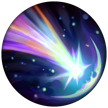







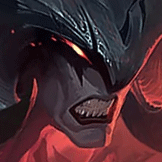
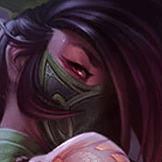
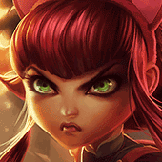
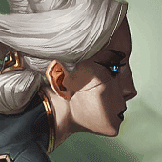
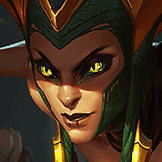
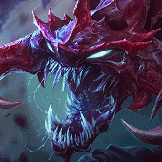
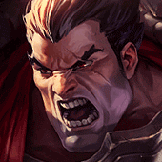

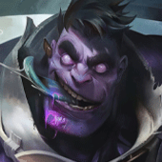
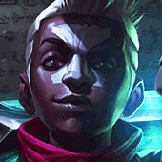
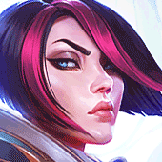
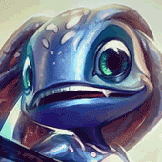
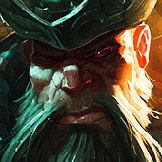
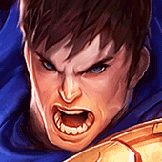
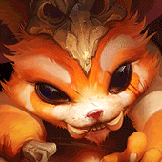
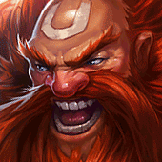
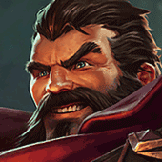
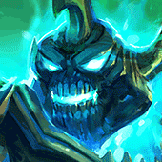
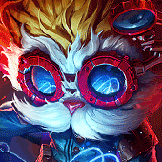
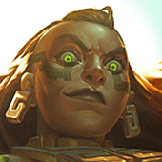
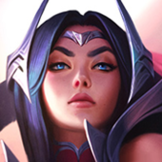
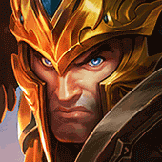
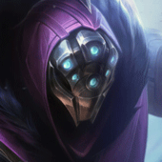
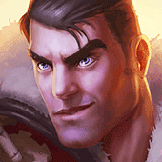
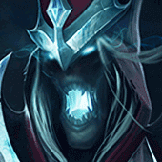
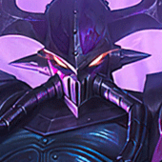
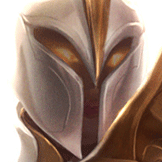
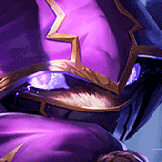
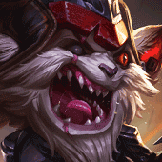
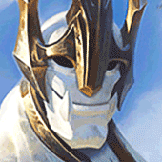
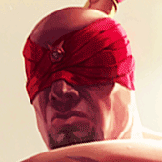
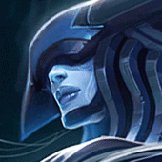
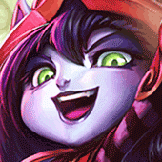
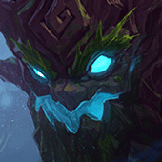
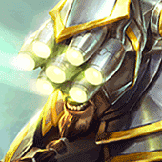
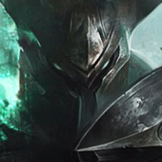
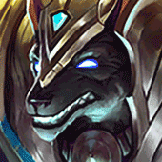
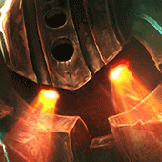
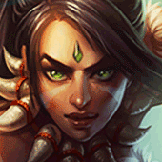
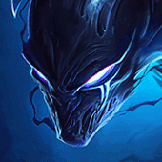
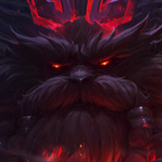
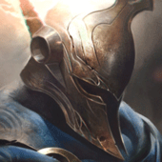
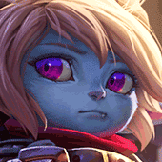
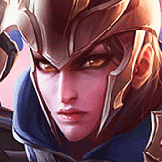
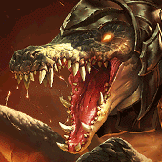
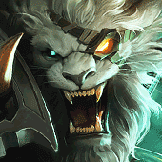
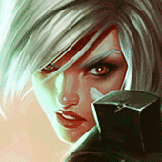
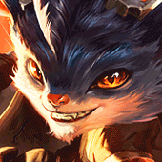
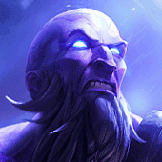
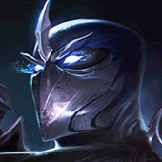
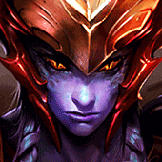
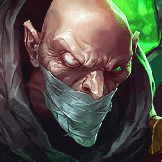
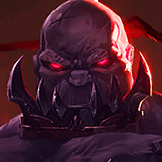
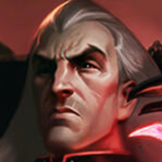
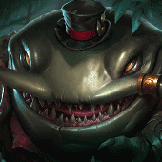
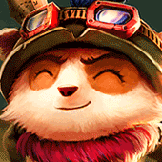
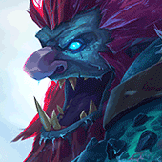
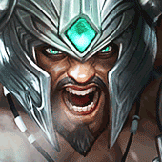
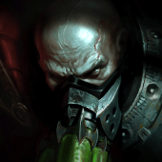
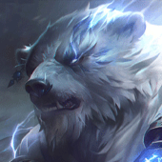
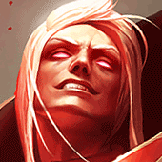
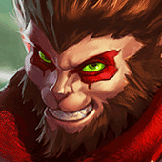
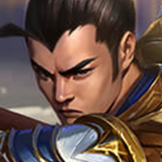
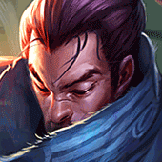
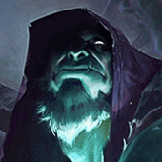
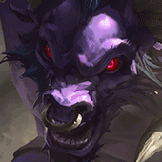
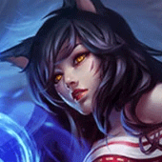
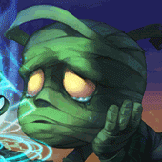
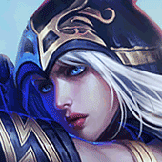
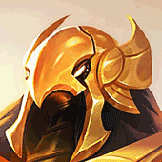
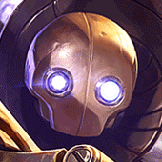
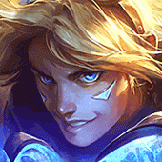
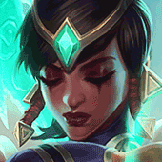

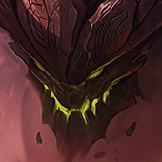
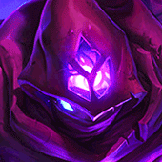
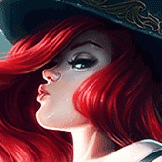
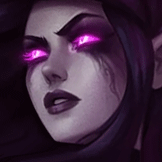
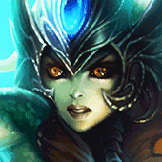
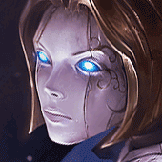
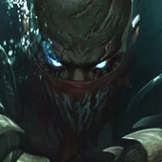
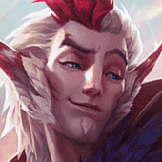
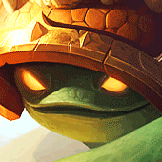
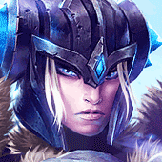
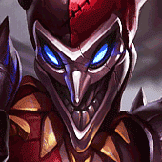
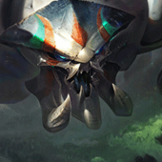
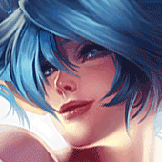
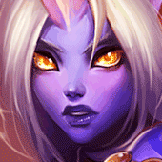
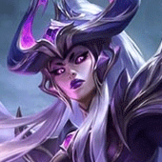

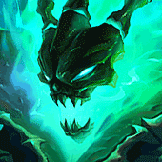
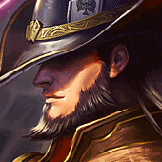
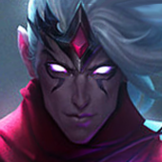
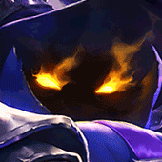

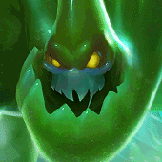









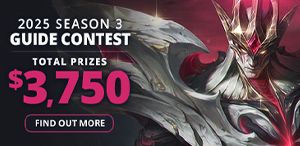
 Twitter
Twitter
 Facebook
Facebook
 YouTube
YouTube
 PayPal
PayPal
 Patreon
Patreon

You must be logged in to comment. Please login or register.